Search result

After months of leaks, Vivo Nex 3 is finally released. As expected, the headline feature is its waterfull full view OLED display, which spills over the sides of the Nex 3 and has screen-to-body ratio of 99.6 percent. The 6.89-inch HD+ AMOLED display has very less bezels which leaves no room for physical buttons on the side of the phone. The screen resolution is 1080 x 2256 pixels. Instead, Vivo is adding virtual buttons called Touch sense alongside a port-less and button-less design we saw earlier this year.
The Nex 3 is one of the most advance smartphones today. Vivo is releasing two variants of the phone with 4G and 5G network support, both of which run on the same processing chip - Qualcomm snapdragon 855 plus. To keep the phone cool it uses a vapor chamber cooling system. The battery capacity is 4,500mAh and supports super flash charge 44W fast charging. As for the security, the phone uses in-display fingerprint sensor.
Vivo introduced a circular triple-camera module that Vivo calls the lunar ring. This house a 64-megapixel main camera with another 13-megapixel ultra-wide lens, and a 13-megapixel telephoto lens. Vivo Nex 3 has again used the pop-up selfie camera. Vivo hasn't said anything about the price factor and the device will be available in only selected country in Asia pacific and other markets. Connectivity options include Connectivity options include 3.5mm audio jack, Bluetooth v5, NFC, USB Type-C, Wi-Fi 802.11 ac and GPS + GLONASS.

Almost every week, we heard about new technology coming to the mobile phone industry but mobile chargers are usually the least-focused area of these manufacturers. While we are still a long way off batteries that can survive more than a day without a need to re-charge, we do have the next best thing - super fast charging. Now Vivo has announced super flash charge 120W charging technology that can fully charge a 4,000mAh battery cell in just 13 minutes. Yesterday, Vivo uploaded a video on the Weibo page that demonstrates super flash charge in action without providing much detail of the full charge cycle. In the video, the charging went from 10 to 14 percent battery in just 16 seconds.
So far we have seen Xiaomi 100w charging technology in March but it hasn't reached to the consumer market even after three months. OnePlus 7 Pro's warp has a fast charging speed but Vivo's super flash charge is really insane. But it does rise a question about its impact on the battery life in the long run. Vivo may unveil its super flash charging technology at MWC Shanghai next week with its first 5G enabled smartphone. The competitors may make claim about its negative effect on the battery but that's what we have to see.
The other concern about the heating problem. With xiamoi's charger we have seen this problem. How Vivo manage the over-heating issue, and will this kind of charger can sustain for a long period of time? So far, the fastest charger available is with Oppo Find X Lamborghini edition which fully charge a 3,400mAh battery in 35 minutes.

Samsung has just announced the Galaxy Note5 (5th Generation Galaxy Note). In this one, Samsung has dropped plastic completely for a metal and glass follow-up to the Galaxy S6. The bezels around the 5.7" screen are narrower, the phablet itself is almost a millimeter thinner making it easier to hold in the hand.
The Super AMOLED screen has QHD resolution as before, but the way it interacts with the S Pen stylus has been revamped. The stylus is clickable, though that only serves to get it out of its sheath. Once you do, you can start immediately taking a note even when the screen is "off" (with AMOLED the distinction is small).
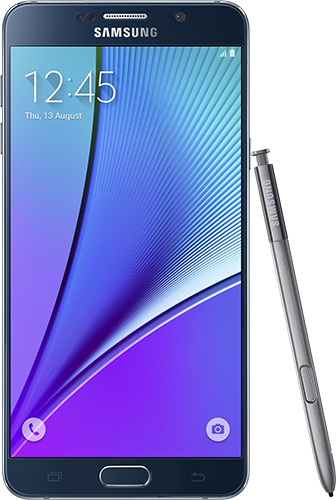
As of the Specs, the Galaxy Note5 has 4GB of RAM, up from 3GB on both the Note 4 and Galaxy S6. This gives apps more playroom, but the Exynos 7420 chipset will have an even bigger impact it's currently the fastest mobile chipset on the market, Samsung didn't even need to overclock it as new competition is yet to catch up.
Storage is based on the fast UFS 2.0 standard. While it outruns regular eMMC 5.0 storage, data hoarders have been locked out of expanding the memory the base model has 32GB, you can upgrade to 64GB and that's it. No microSD slot, no 128GB option.
The camera is a 16MP sensor behind a wide f/1.9 aperture, plus optical image stabilization and auto real-time HDR. It can record 2160p video or livestream 1080p to YouTube. For selfies you get a 5MP sensor and an f/1.9 aperture. Samsung has updated the audio department with Ultra High Quality Audio, which promises "richer" sound. This feature will work over Bluetooth with new compatible Level On headphones.
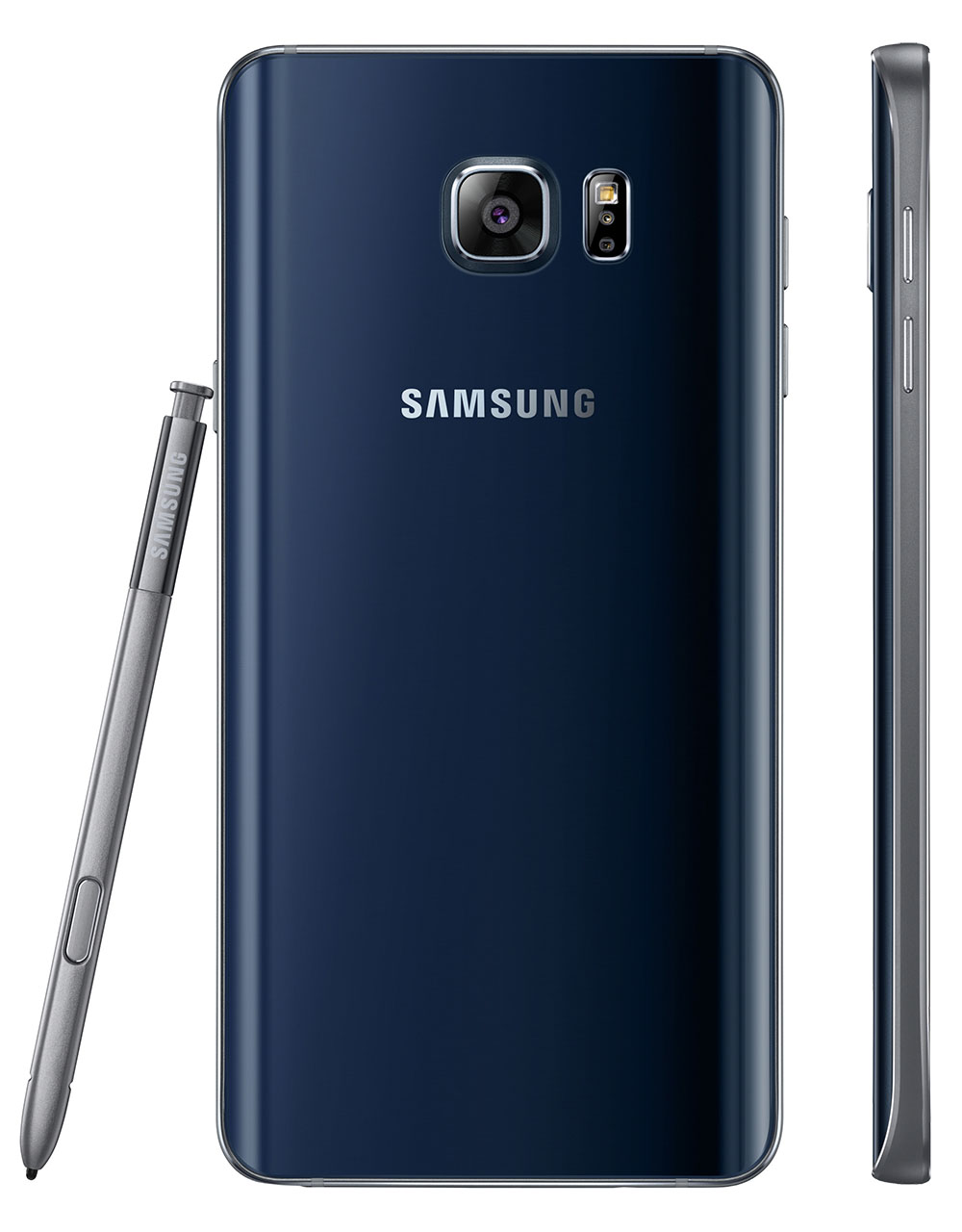
The Galaxy Note5 checks wireless all boxes, but a highlight is Samsung Pay, which works over NFC or MST (Magnetic Secure Transmission). Pay will launch in the US in September so it will be ready when Note5 arrive in users' hands. Much like the storage, the battery has been sealed off. What's more the capacity dropped to 3,000mAh. Samsung is counting on Fast Charging both wired and wireless!
The Samsung Galaxy Note5 will be available for pre-order today, coming in Black Sapphire, White Pearl, Gold Platinum and Silver Titanium. It will be available in the US on August 21st, with pre-orders starting today. You can go for a hands-on as soon as tomorrow in 7,000 locations across the US. Pricing will be announced by the carriers.
Mo Cheng
Editor-In-Chief
YouMobile
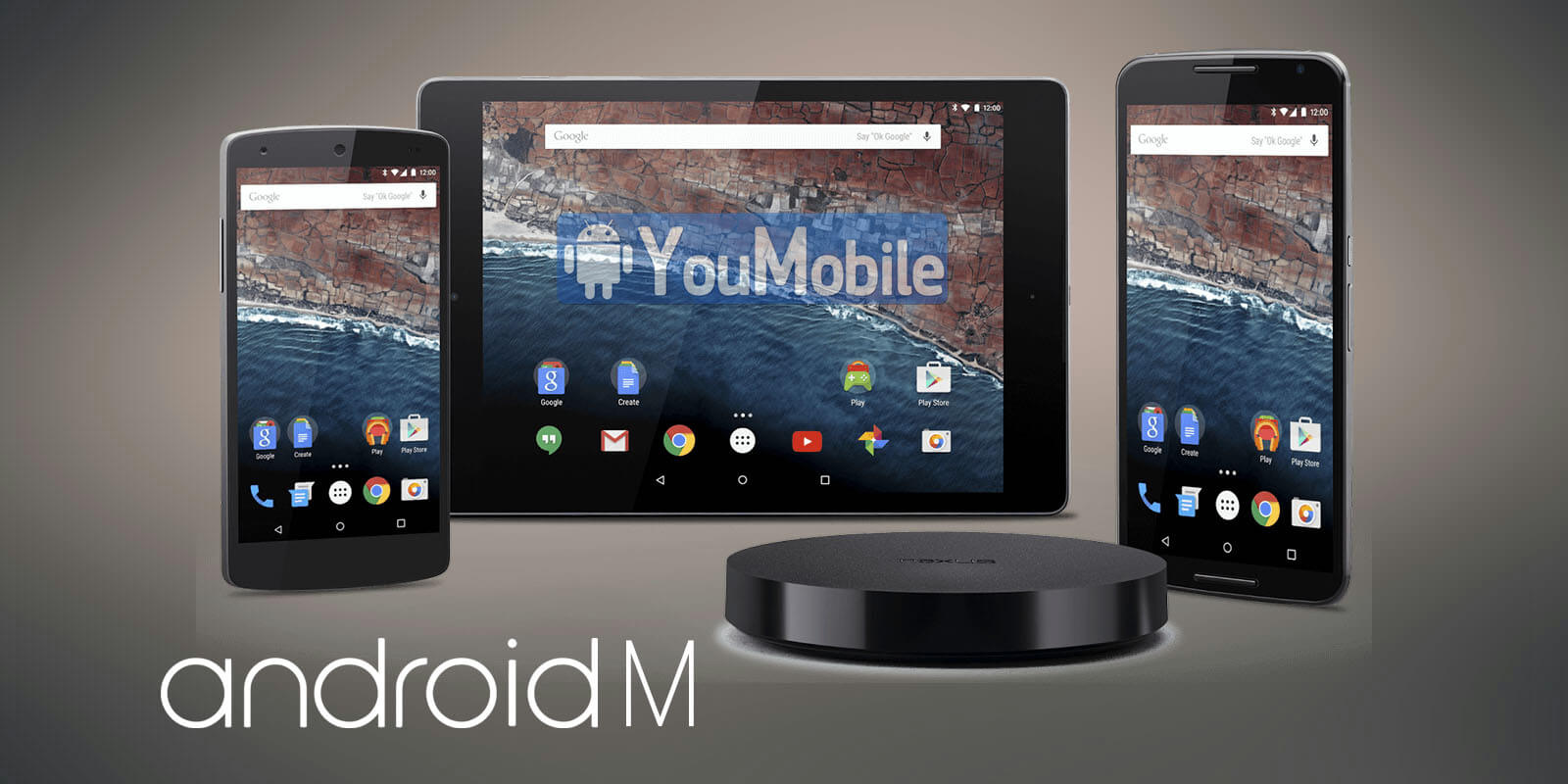
As we reported before. Today, Google has just officially announced Android M Developer Preview, the preview images will be available today and the final official release will be available later this year. There is no official candy-flavored name for Android M yet. Here's What's New on Android M :
Handling App permissions!
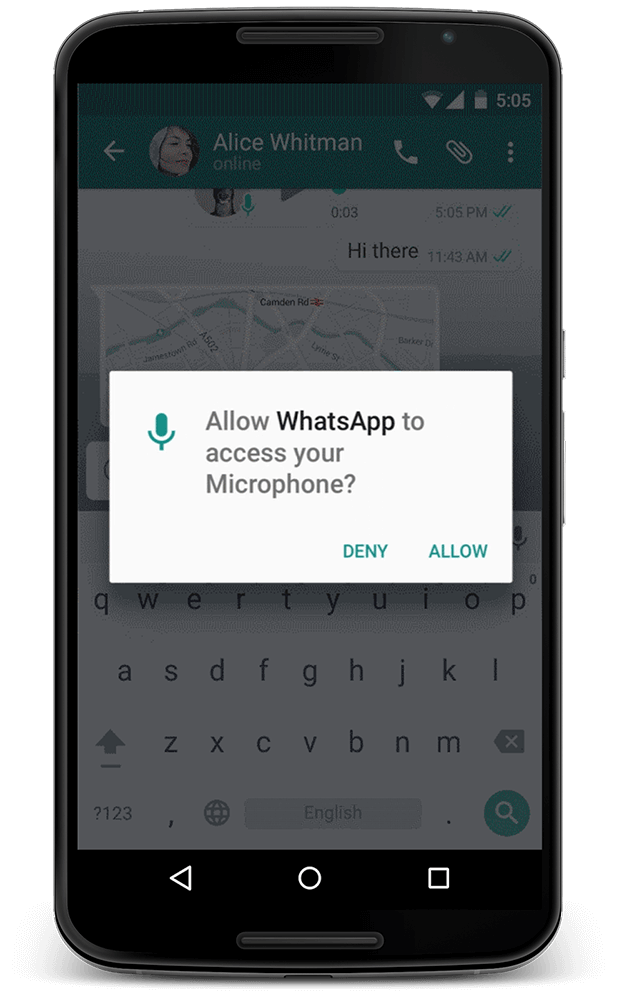
Android M is now official and it will be all about the user experience
First and foremost, it is already being perfectly clear to us that Android M will be largely focused on the user experience instead of major UI design overhauls, like was the case with Android Lollipop. The very first feature announced on stage at I/O 2015 were changes to app permissions - a seemingly unimportant aspect of Android, but one that we clash with on a daily basis. In Android M, which will have its own developer preview available as Lollipop did, users will have to battle with, and okay, permission requests much less often. Why? Because app permissions will be granted only once, instead of every time you install an app. For example, if you want to send a voice message through Whatsapp, you'll only have to agree to grant the app the permission once, and will never be asked to allow microphone usage in apps again. The above will apply to all other categories of permissions, which have been simplified to be more understandable than before - so things like 'Camera' and 'Location'.
Since you may want to revoke a permission from an app at a later time, you'll be able to do so through a menu in the settings, which will let you to control whether all or select apps have access to a certain category of permissions.
Android Pay and native fingerprint scanning support

Another major announcement has to do with a new service alike to Apple Pay. Called Android Pay, it's Google's reboot of Wallet, allowing for mobile payments within stores. As you can imagine, it'll use NFC to communicate with terminals. On top of this, Android M is also introducing native support for fingerprint scanners, so manufacturers will no longer have to bake in support themselves at least unless they want to. Coupled with Android Pay, it's obvious that Google is getting really serious about mobile payments.
Chrome Everywhere
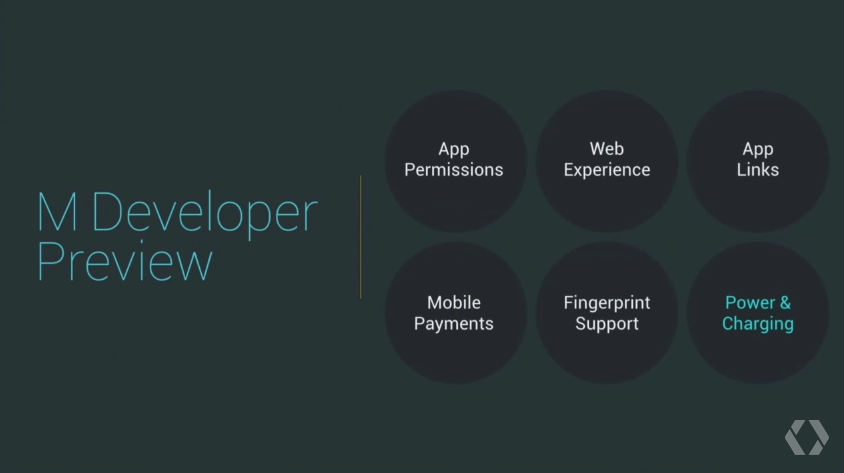
Android M is now official and it will be all about the user experience.
If you're big on reading through Facebook, you will likely have noticed that the app no longer sends you off to do your thing with the help of third-party browser, and instead does everything within Facebook. This very same type of functionality is coming to apps (Pinterest being confirmed), allowing third-party developers to bake in such functionality within their apps. The heavy-lifting will be done with Chrome, though the interface will remain consistent with the app's design.
Why you should care? Because this implementation will allow apps to pre-fetch content before you even open it, so load times will be lower than ever.
Android M "Dozing"
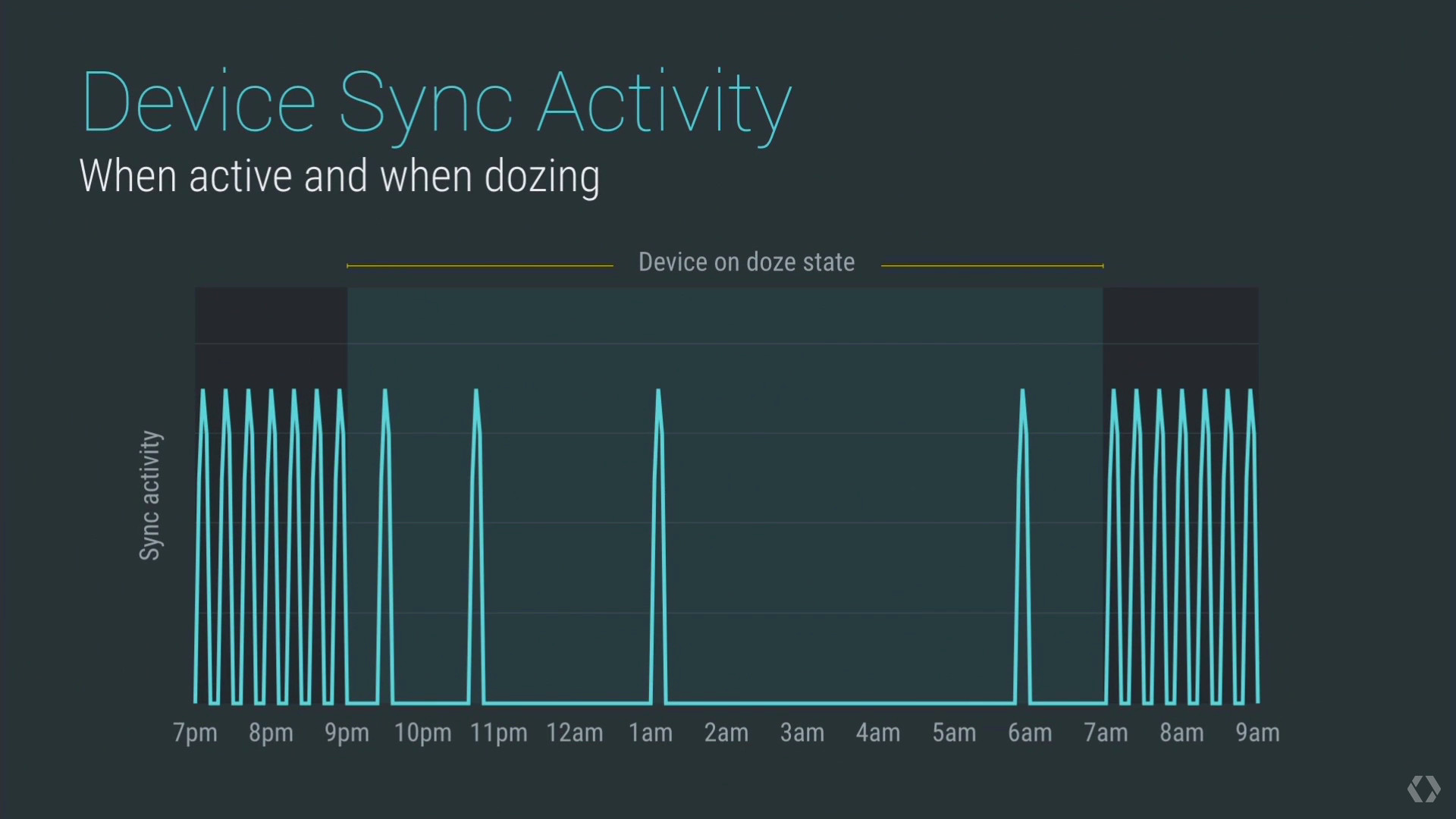
Seeing how battery life continues to be an overarching issue with smartphones, it only makes sense that a major update such as Android M will focus on this aspect of the experience as well. With M, Google is introducing 'dozing', a special mode that will only activate when your device's various sensors determine that your device is not being used (say, it's just standing on your desk), and enter an even deeper state of sleep. Thankfully, dozing won't stop your alarms and priority notifications from reaching you.
The results? Google claims that an identical setup with Android M manages up to x2 the standby time of a device on Android Lollipop. If true, dozing truly is a big deal.
On a related note, Google has made its support for USB Type C charging ports public, meaning that we can expect more such devices to creep up on us rather soon. The end of failed attempts at connecting your device is in sight, people!
The small things
Not every Android M feature is as noteworthy as Android Pay or better power management, yet the smaller things do make life easy (or a living hell). Two such examples are sharing content on (stock) Android, and volume control.
Direct share
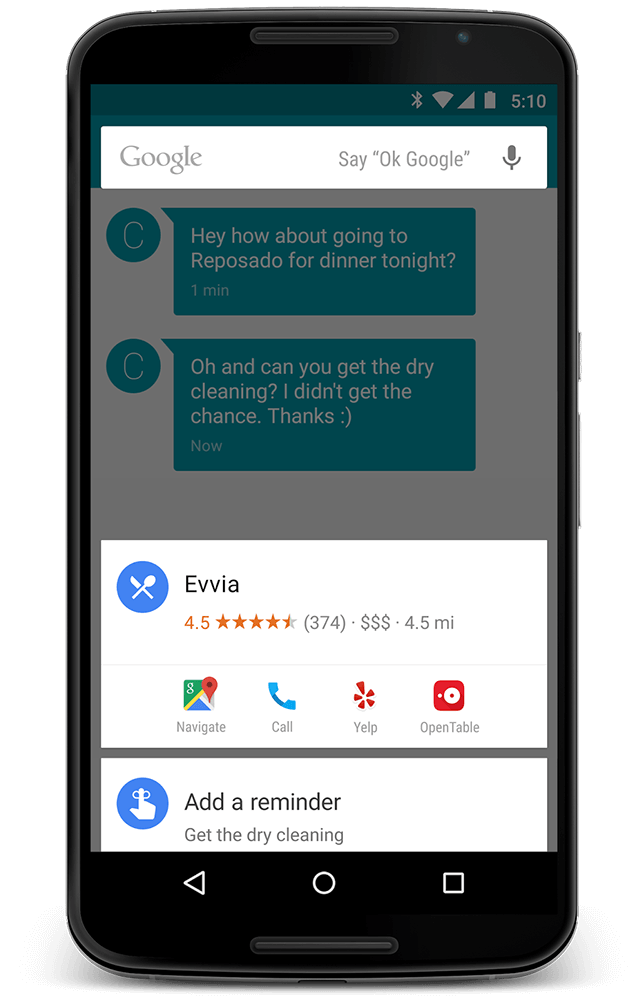
While sharing various types of content has been core to the Android experience, one could (successfully) argue that the implementation has been in need of a serious improvement for a while. Not only are we bombarded with tons of apps we can share content to, but many devices don't really learn from your usage habits.
Seeing as Google is pitching Android M as all about the user experience, it makes sense that it worked on that. With Android M, your device will finally make sense of how and who you share with, allowing for ever smarter suggestions next time around. So if you constantly send over content to your girlfriend, your Android M-toting device will know that you're most likely to share with her again in the future. So she'll be your number one option.
This feature has been available in proprietary, Android-based UIs, but it's good to see Google is both paying attention and willing to implement smart ideas into Android.
Finally! Volume control by category
Another exceedingly smart feature available with select manufacturer UIs, and unavailable with Android Lollipop, is volume control by category. This means that if you wish to change the volume for notifications and alarms, but not music and your ringtone, you could only do so whilst in an app the controls this category of sound. So the media controller was only available when in a music app. With Android M, this will finally change, as the volume bar will now include the sliders for all groups.
Mo Cheng
Editor-In-Chief
YouMobile
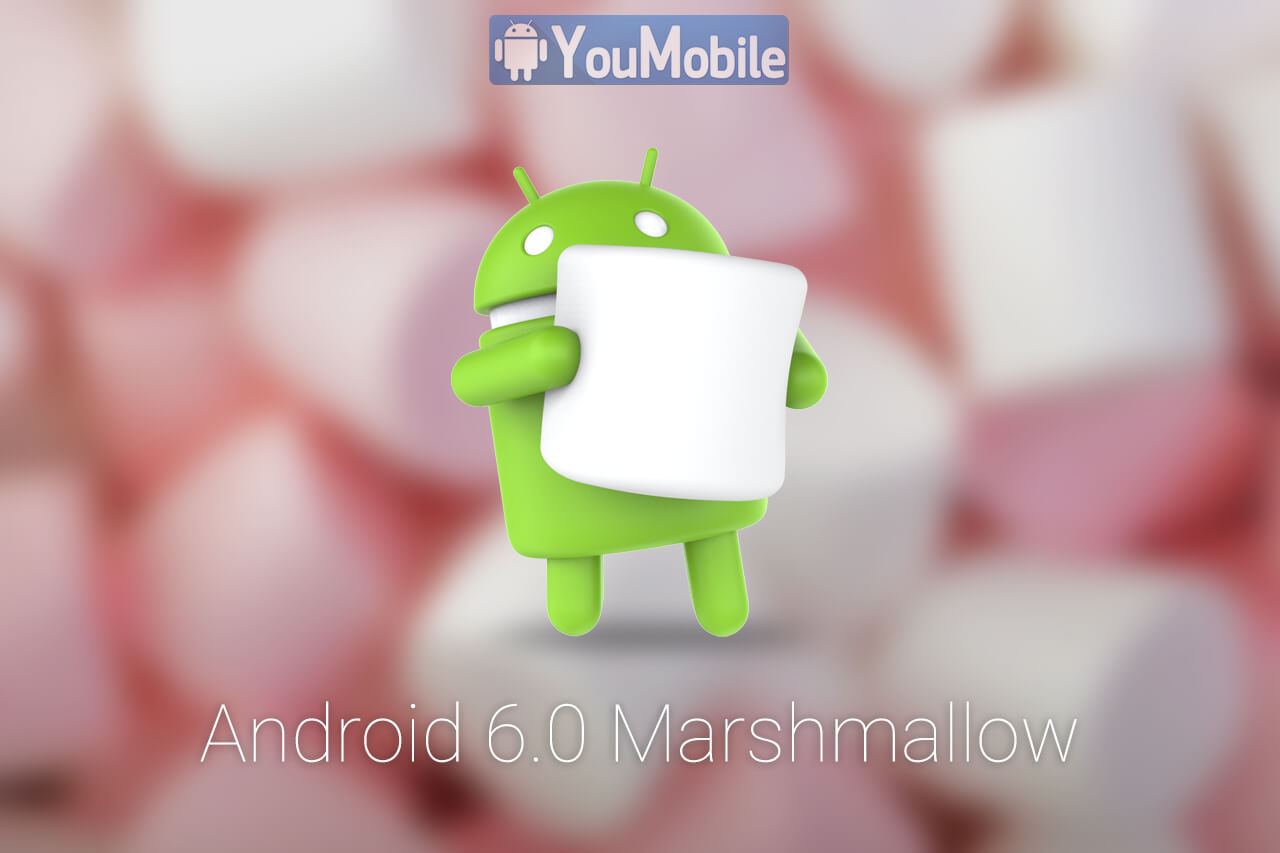
Google has just officially announced that Android M will be called "Android 6.0 Marshmallow". Google's HQ building in California added the new mascot of a green Android holding a white Marshmallow.
The company also announced that Android 6.0 Marshmallow new Developer's Preview is now available on Nexus 5, 6, 9 and the Nexus Player. The preview will be the last one before the RTM Final version.
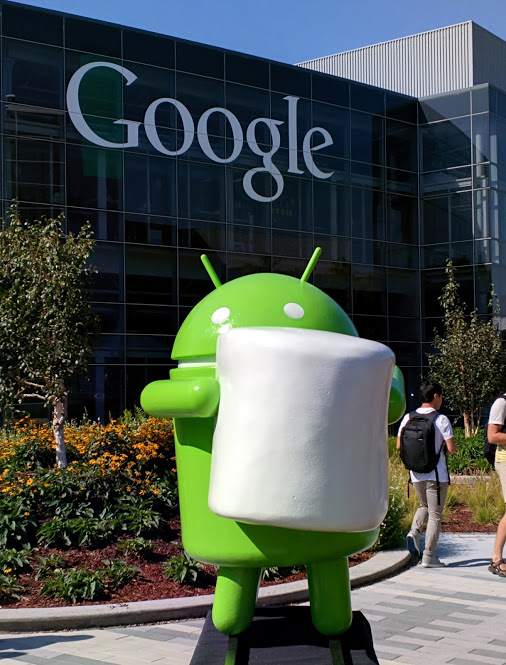
The official SDK is live as well. Developers can now upload their Android 6.0 compatible apps to the Play Store.
What's New in Android 6.0 Marshmallow
Well, Android 6.0 Marshmallow Updates should start rolling-out to Google Nexus devices this fall. Stay tuned!
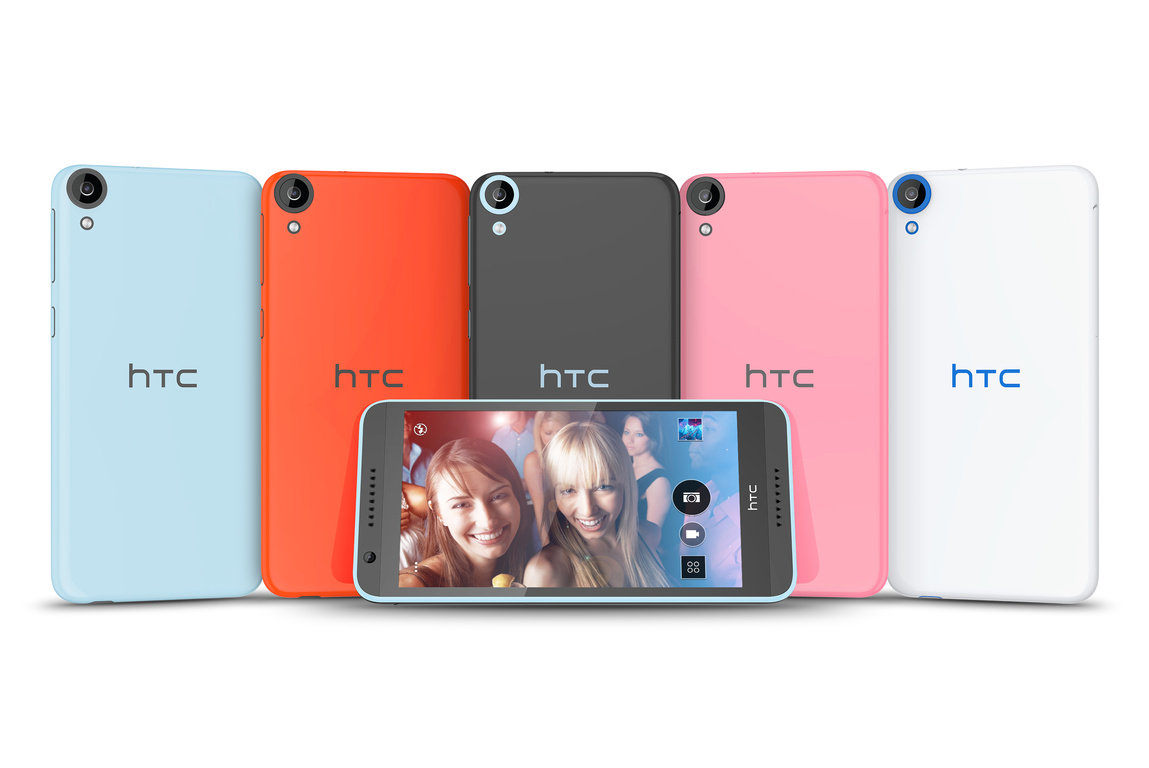
HTC has announced the latest member of their Desire family. The new HTC Desire 820 is the successor to the popular Desire 816 and is the second HTC phone to have a 64-bit processor.
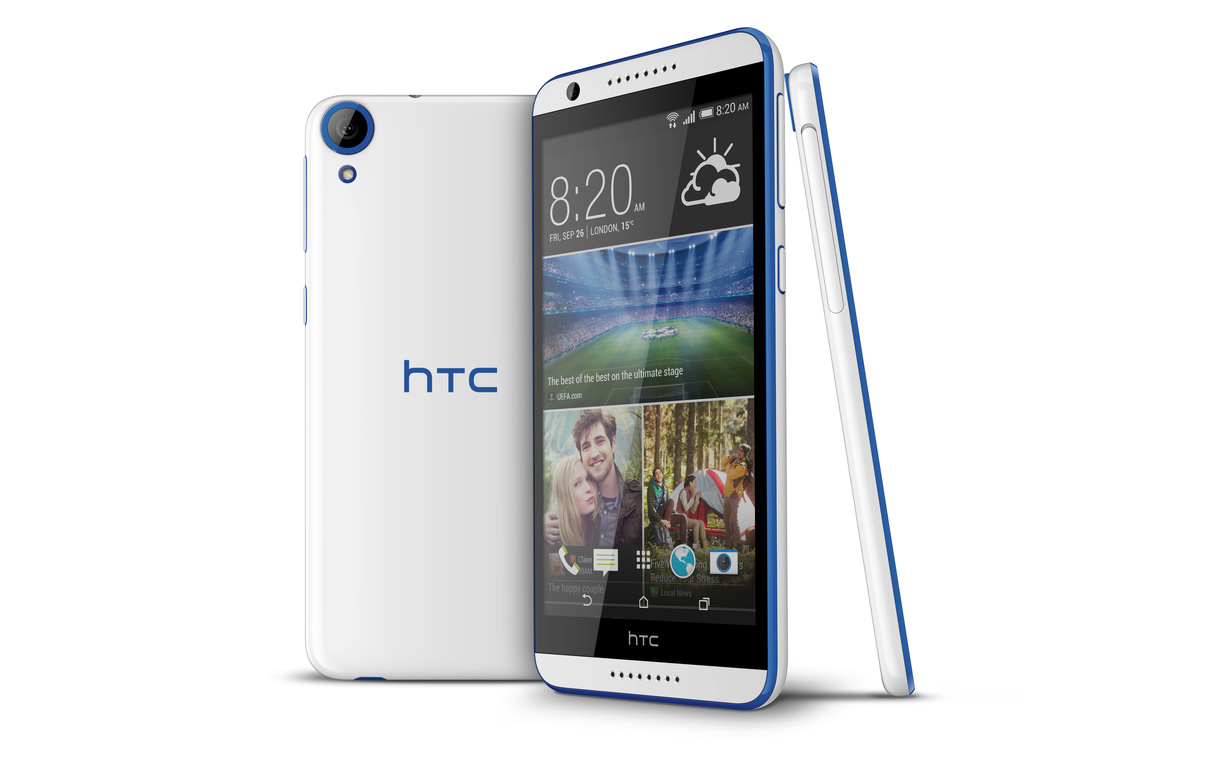
The Desire 820 is the first phone to run on the new Qualcomm Snapdragon 615 (MSM8939), which has an octa-core CPU with eight Cortex-A53 cores, four of them clocked at 1.5GHz and four at 1.0GHz, along with Adreno 405 GPU. The SoC is based on the 64-bit architecture and HTC will update the phone to Android L, which is designed to take advantage of 64-bit processing.
HTC Desire 820 Full Specifications
The Desire 820 also has a 5.5-inch, 1280x720px display, 13 megapixel rear camera, 8 megapixel front camera, and BoomSound speakers. The phone will offer Cat 4 LTE connectivity.
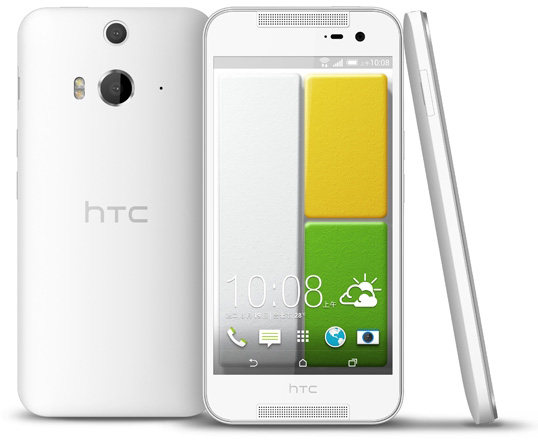
HTC has announced the Butterfly 2 for the Asian markets. The phone was previously launched on KDDI in Japan as the J Butterfly but will now be available in other Asian markets, including Hong Kong, India, Malaysia, Singapore, and Thailand.
The HTC Butterfly 2 has a 5.0-inch, Full HD display, Snapdragon 801 SoC with 2.5GHz quad-core CPU, 2GB RAM, 16/32GB storage space, microSD card slot, HTC Duo Camera with 13 megapixel main sensor with f/2.0, 28mm lens and additional depth sensor on the back, 1080p video recording, 5 megapixel front camera, water and dust resistant body, 2700mAh battery and Android 4.4 KitKat.
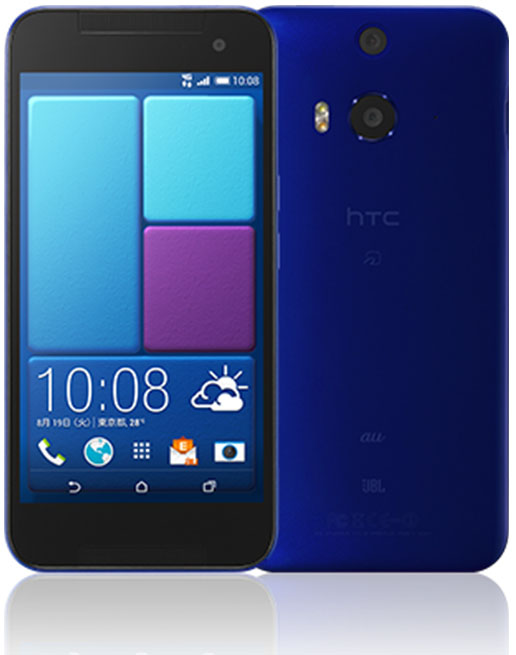
The Butterfly 2 also has HTC's BoomSound speakers. On top of that, HTC has collaborated with Harman Kardon to come up with the LiveStage Signal Processing Technology. The device will be go on sale on September,2nd.
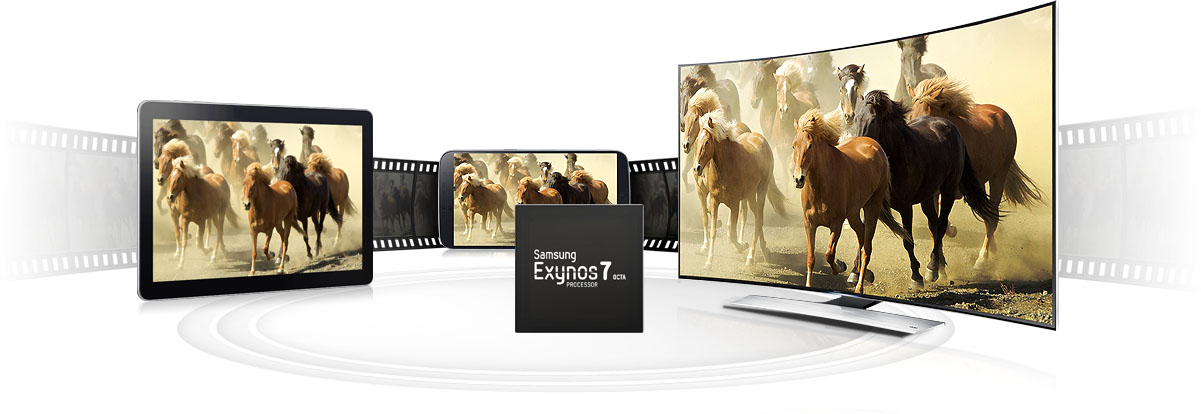
Samsung announced its first 64-bit Chip, the Exynos 7 Octa. It will be the first chip to fully supports Android 5.0 Lollipop which is also the first 64-bit Android OS.
With the Exynos 7 Octa, the company is going to have a much better time with customers differentiating the more powerful Galaxy Note 4 from the Galaxy Alpha, which also packs an Exynos 5 Octa (5430). However, it's a much less powerful one with a quad-core 1.8 GHz Cortex-A15 and quad-core 1.3 GHz Cortex-A7 CPU.

The Exynos 7 Octa features a octa-core cpu consisting of four Cortex-A57 and for Cortex-A53 cores made using Samsung's 20nm manufacturing process. This results in a 57% boost performance over the previous generation Exynos 5 Octa chipset and thanks to the new manufacturing process, draws less power, too.
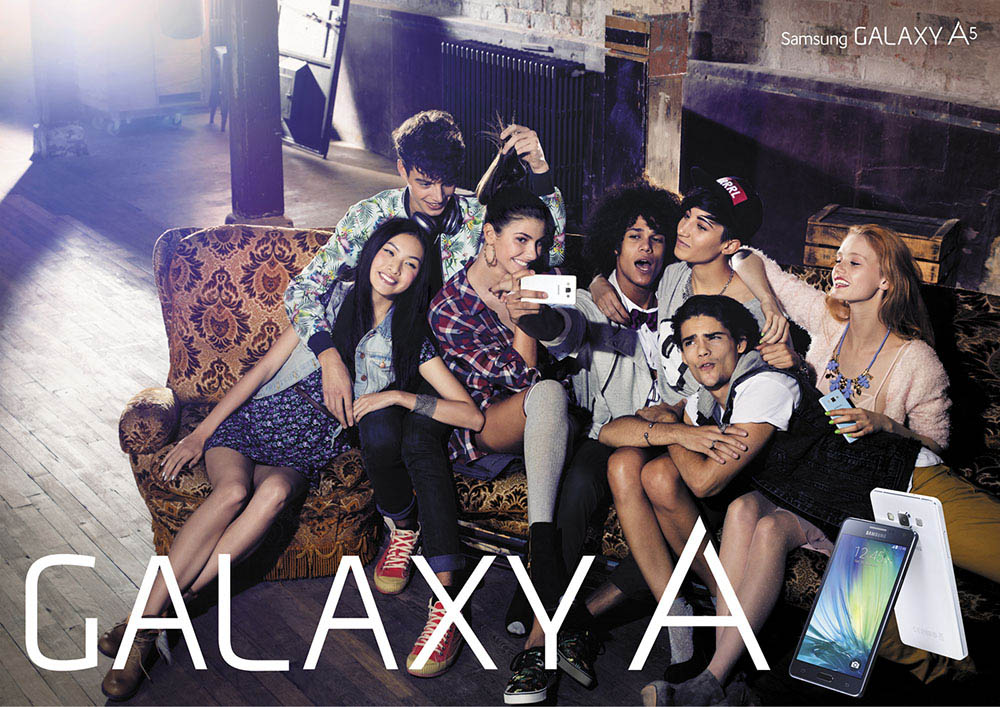
Samsung has just officially launched the "Galaxy A" family and launched two Smartphones, Samsung Galaxy A5 and Galaxy A3. These two Android smartphones is targeting young buyers with entry-level and mid-range specs, variety of colors, and decidedly premium all-metal unibody.
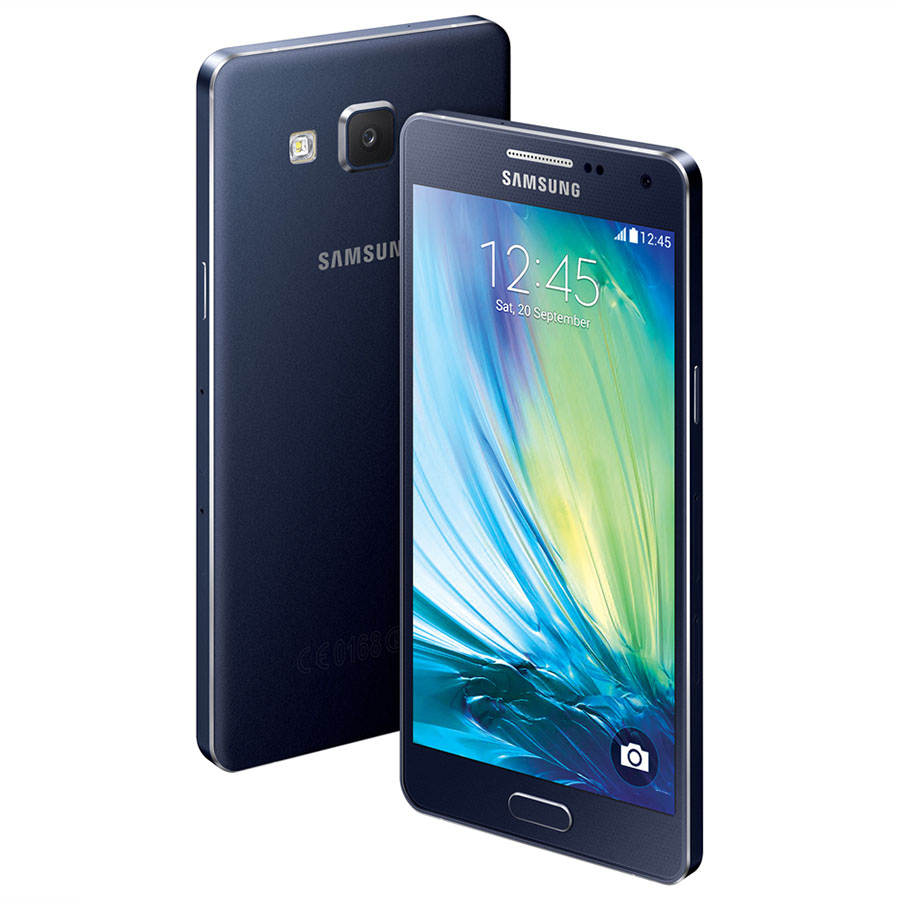
Samsung Galaxy A5 packs 1.2GHz quad-core CPU and 2GB of RAM.There's 16GB of built-in memory, which can be further expanded via microSD card slot.
The device's display is a 5" HD Super AMOLED unit 720p resolution. A 13MP main camera, 5MP front-facing unit, and full connectivity suite that includes LTE round up the highlights in its spec sheet. Samsung Galaxy A5 boots TouchWiz-ed Android 4.4 KitKat. Physical measures of the Samsung Galaxy A5 are 139.3 x 69.7 x 6.7mm, while its weight tips the scale at 123 grams. The handset is powered by a 2,300mAh battery.
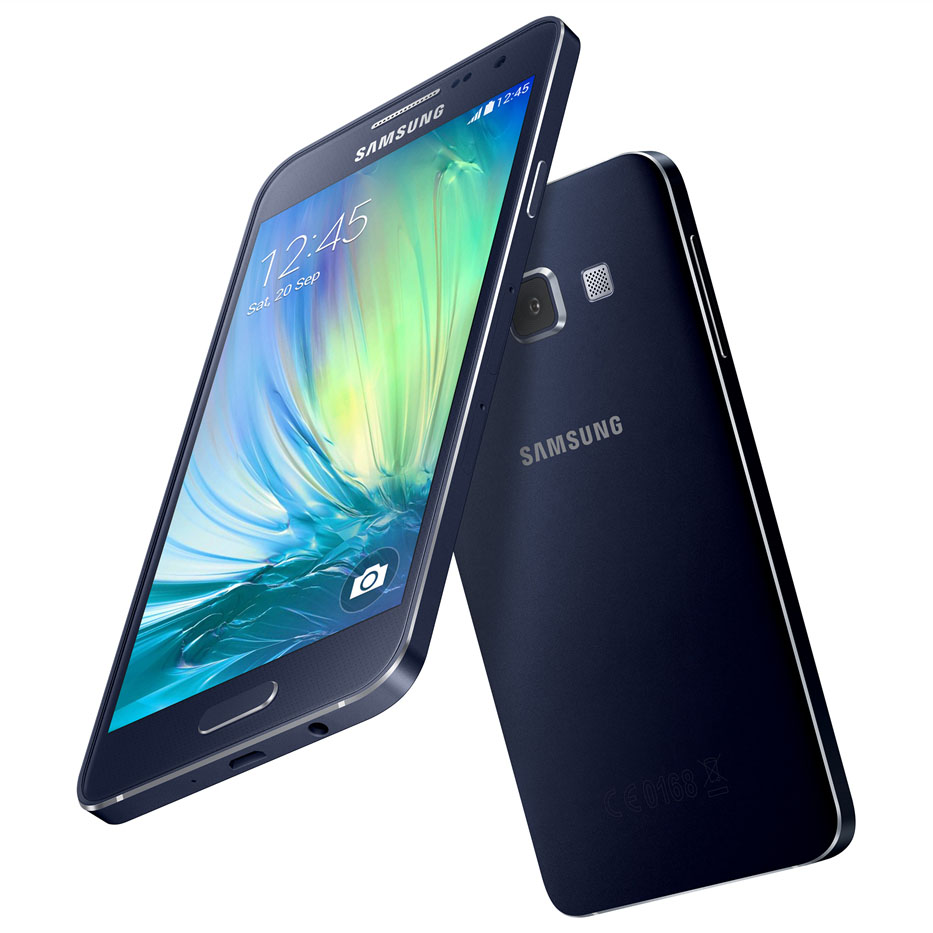
Samsung Galaxy A3 on the other hand packs 1.2GHz quad-core CPU and a gig of RAM. Onboard memory is 8GB, which can be further expanded via microSD card slot. The display of the Galaxy A3 is a 4.5" qHD Super AMOLED unit. The device's main camera is an 8MP unit, coupled with 5MP front-facing snapper. Full connectivity suite is also on board, headed by Cat4 LTE. Like its bigger brother, the A3 boots Android 4.4 KitKat with TouchWiz UI.
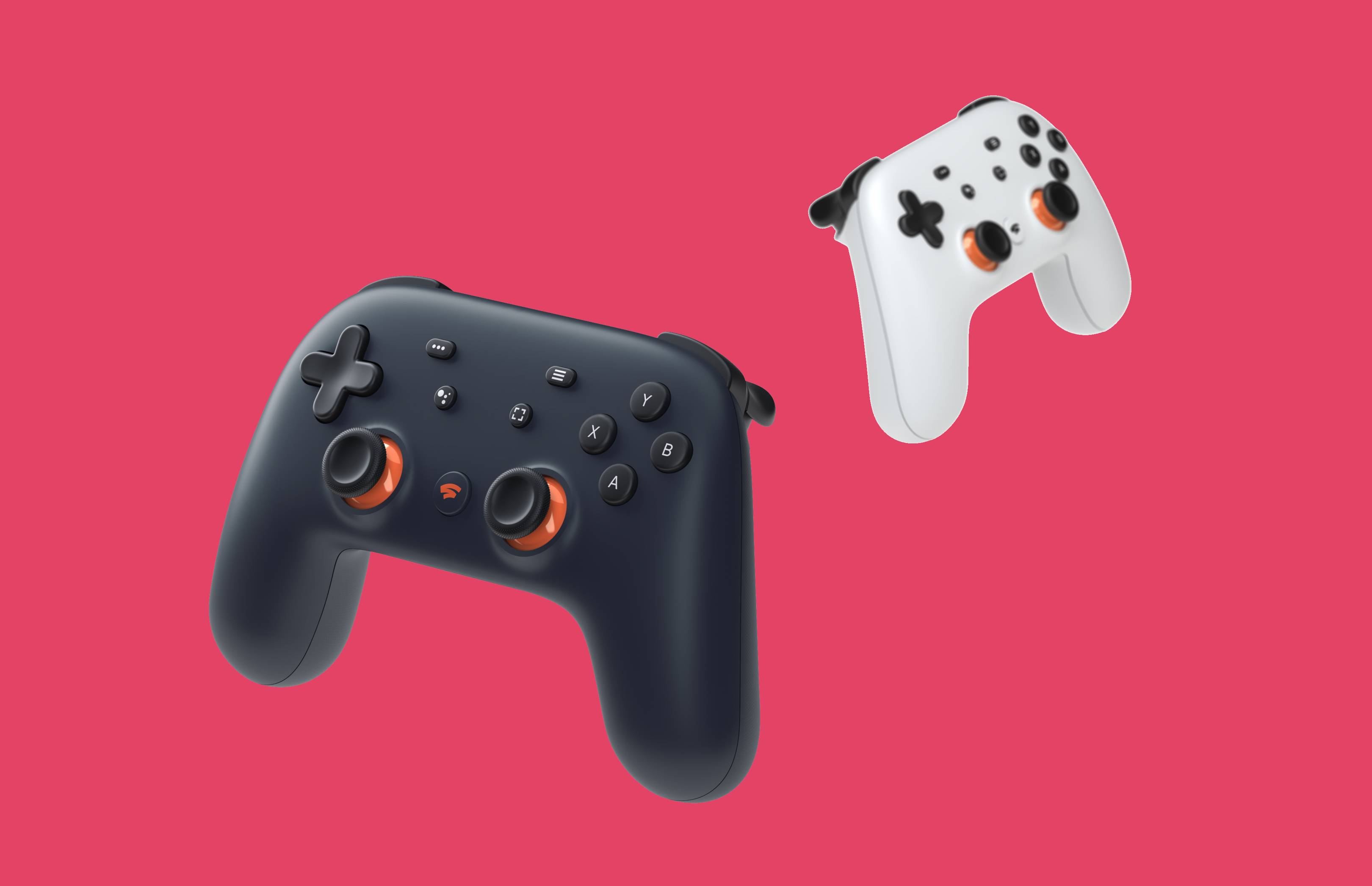
About Google Stadia
On March 2019, Google announced its widely anticipated game streaming service, Google Stadia. The service will allow players to play triple-A gaming titles on multiple devices like smartphones, tablets, and PCs by paying a nominal subscription fee. It will stream the games from Google cloud servers in full HD and has the potential to stream 4K games at 60fps.
What's New?
Google Stadia will be playable on big screen TVs through Google's Chromecast Ultra dongle. Desktop, laptop, Pixel 3 smartphone, and tablet users will be able to access the games directly through the Chrome Browser.
Pricing
Google announced that Stadia will have two pricing models: the Stadia Base and the Stadia Pro.
Players opting for the Stadia Pro have to shell out $9.99 per month while it is free for Stadia Base. Players will need around 35Mbps (minimum) internet speed to avail the Stadia Pro. For the Stadia Base, you will be able to access the service with speeds of minimum 5Mbps connection. The base version of the service will be capped at 1080p and stereo sound. The pro version will support up to 4K HDR support with 60fps and 5.1 surround sound. So, if you play scratch card games online, it will be worth investing in the Pro version for the superior range of services. Moreover, you will be able to avail special discounts and offers if you are a pro user.
There is a separate Founder's Edition that is currently available for preorder and costs $129.99.
It will include a limited-edition Night Blue controller, Chromecast Ultra (normally sold at $69.99), three-month Stadia Pro subscription and one 3-month Buddy Pass to give Stadia Pro to a friend. You will also get the first chance to claim a Stadia name too.
Additional controllers will cost around £59 each and will be available in three different colours: Clearly White, Just Black, and Wasabi.
Launch date
Google announced that the game streaming service will be available in November 2019. No specific dates have been announced. It is speculated that the company will roll out Stadia in different countries on different days.
Games
Google announced that players will be able to access the following games in Stadia initially:
● Rise of the Tomb Raider - Square Enix
● Samurai Shodown - SNK
● Shadow of the Tomb Raider - Square Enix
● Tom Clancy's Ghost Recon Breakpoint - Ubisoft
● Tom Clancy's The Division 2 - Ubisoft
● Tomb Raider Definitive Edition - Square Enix
● Thumper - Drool
● Trials Rising - Ubisoft
● Wolfenstein: Youngblood - Bethesda Softworks
● Football Manager - Sega
● Get Packed - Coatsink
● GRID - Codemasters
● Gylt - Tequila Works
● Just Dance - Ubisoft
● Metro Exodus - Deep Silver
● Mortal Kombat 11 - Warner Bros. Interactive Entertainment
● NBA 2K - 2K
● Power Rangers: Battle for the Grid - nWay Games
● Rage 2 - Bethesda Softworks
● Assassin's Creed Odyssey - Ubisoft
● Baldur's Gate 3 - Larian Studios
● Borderlands 3 - 2K
● The Crew 2 - Ubisoft
● Darksiders Genesis - THQ Nordic
● Destiny 2 - Bungie
● Doom - Bethesda Softworks
● Doom Eternal - Bethesda Softworks
● Dragon Ball Xenoverse 2 - Bandai Namco
● The Elder Scrolls Online - Bethesda Softworks
● Farming Simulator 19 - Giants Software
● Final Fantasy 15 - Square Enix
Availability
Google Stadia will be available in 14 countries initially including Norway, Spain, Sweden, Germany, Ireland, the U.S., Canada, the U.K., Belgium, France, Finland, Italy, the Netherlands, and Denmark.
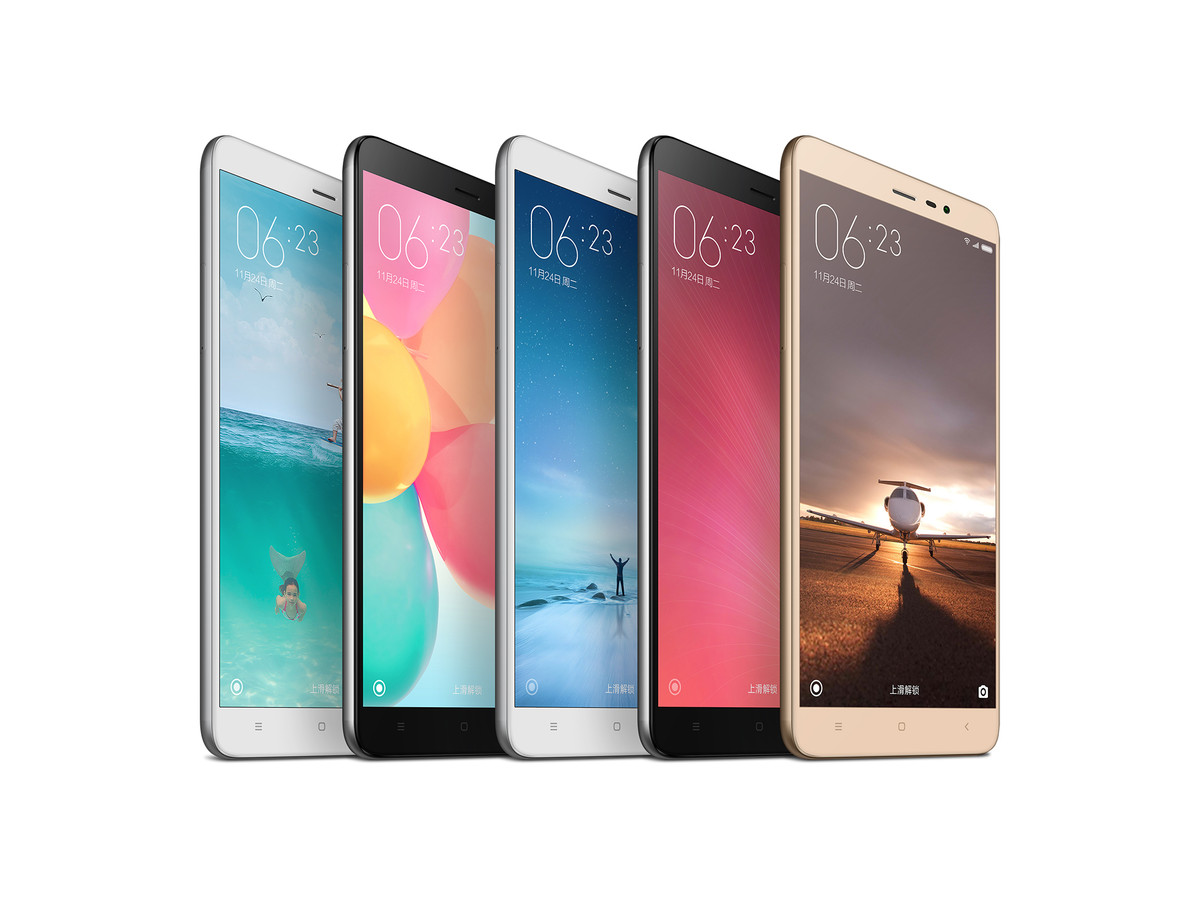
Xiaomi has come up with the new Redmi Note 3 in China. The new device gets bigger and better in comparison to its predecessor, with a new full metal body, fingerprint sensor, a huge 4000mAh battery, and more.
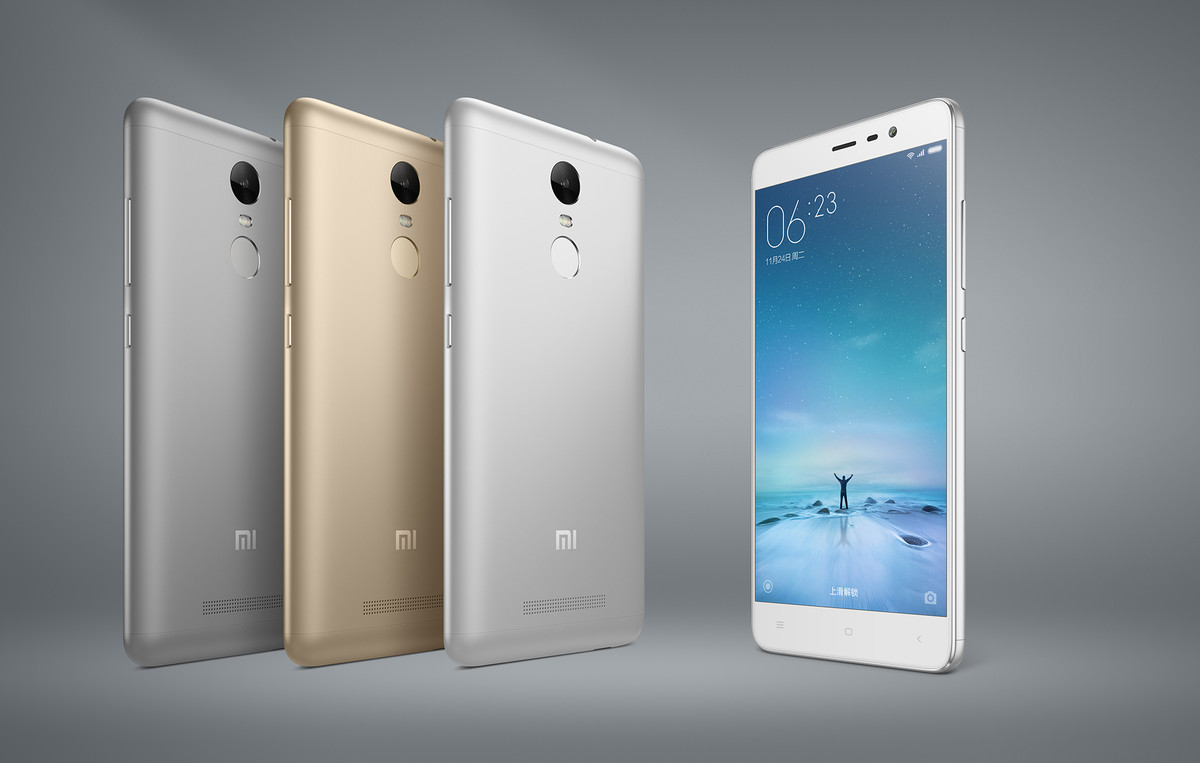
The new Redmi Note 3 sports a full aluminum unibody design with 120-point ultra-fine double sided sandblasting and curved edges. At the thickest area the device will be of 8.65mm and the weight will be 164g, 4g more than its predecessor in spite of the larger battery.
On the rear a new fingerprint sensor is available, which Xiaomi claims unlocks the phone in just 0.3 seconds. Soon we'll see whether the sensor will only be used for unlocking the device or within apps as well. It opens up new possibilities like biometric authentication for payments via the Mi Wallet Service.
Other specifications include a 5.5-inch 1080p display, MediaTek Helio X10 processor, 2GB RAM and 16GB storage or 3GB RAM and 32GB storage depending upon the variant, 13 megapixel rear camera with phase detection autofocus, 4G dual SIM, Wi-Fi 802.11ac, and MIUI 7.
The smartphone will cost RMB 899 ($140) for the 16GB model and RMB 1099 ($172) for the 32GB variant. It will be available in three colors: silver, gold, and gray.
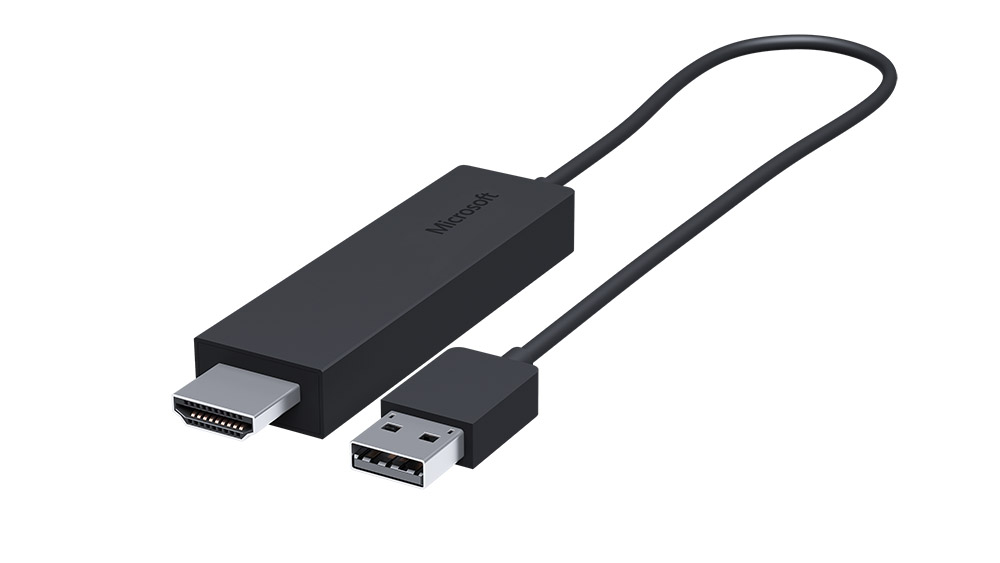
Today Microsoft has officially unveiled its Wireless Display Adapter, which will serve as its competitor for Google's very successful Chromecast dongle.
The Wireless Display Adapter uses Miracast technology, so any Miracast-enabled device can send stuff to it. The adapter itself comes with two plugs: one goes into an HDMI port on your TV, monitor, or projector, and the other one is a normal USB plug which is used for powering the dongle.
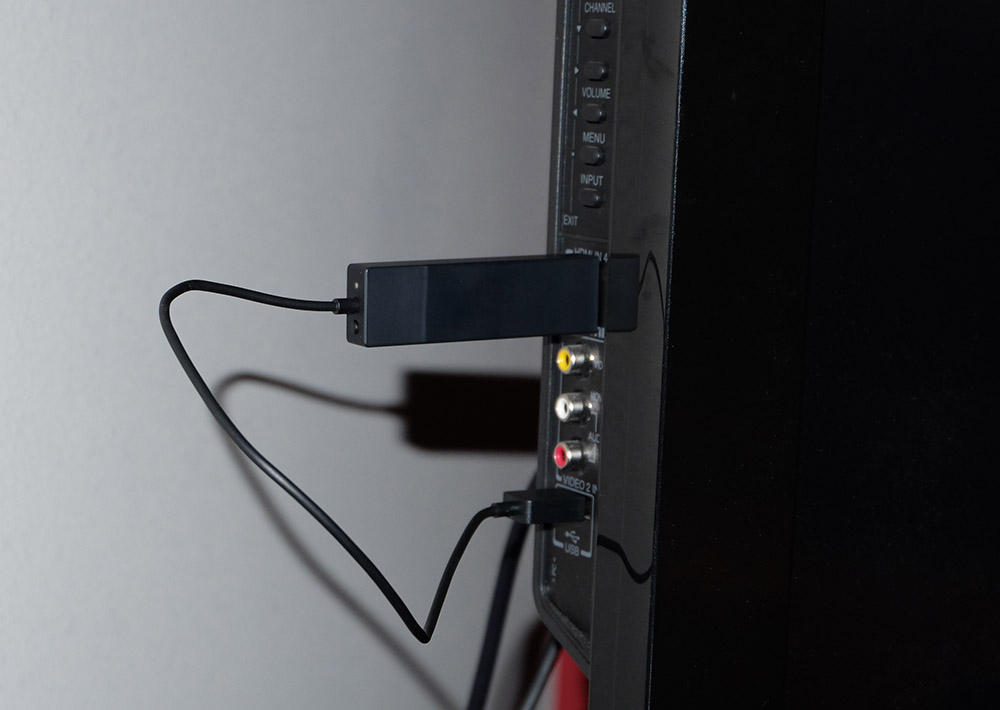
On most TVs, you should be able to simply use a spare USB port for this purpose. The setup is very similar to what's needed to run a Chromecast, in fact. Microsoft's offering boasts improved compatibility, however, since it automatically works with any Miracast-enabled device out there, so you're not limited to certain apps that support its streaming protocol.
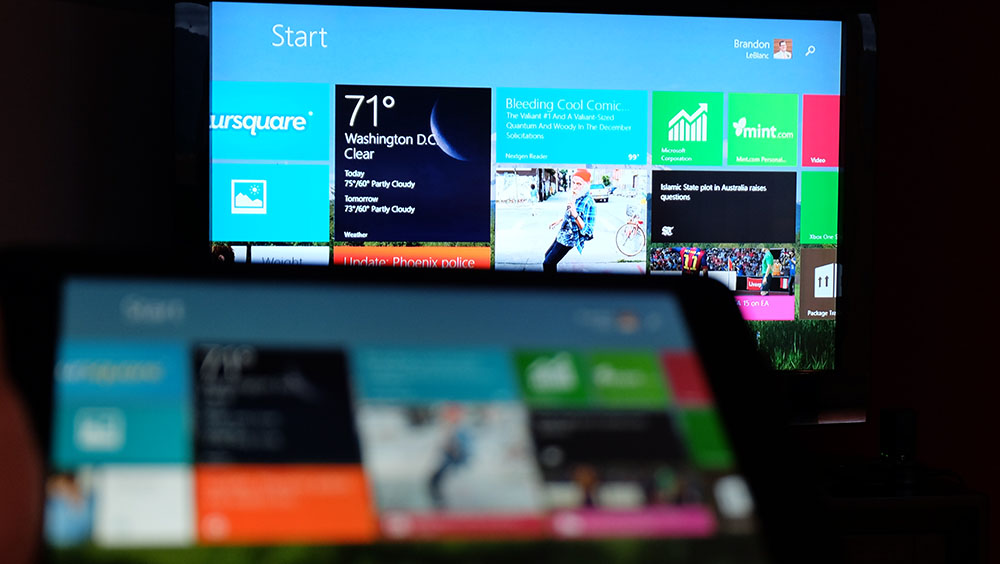
There is one downside to Microsoft's dongle when compared to the Chromecast price. The Wireless Display Adapter is now available for pre-order in the US and Canada, via Microsoft's online store. In the US, it's priced at $59.95. It will be released on October,31st.
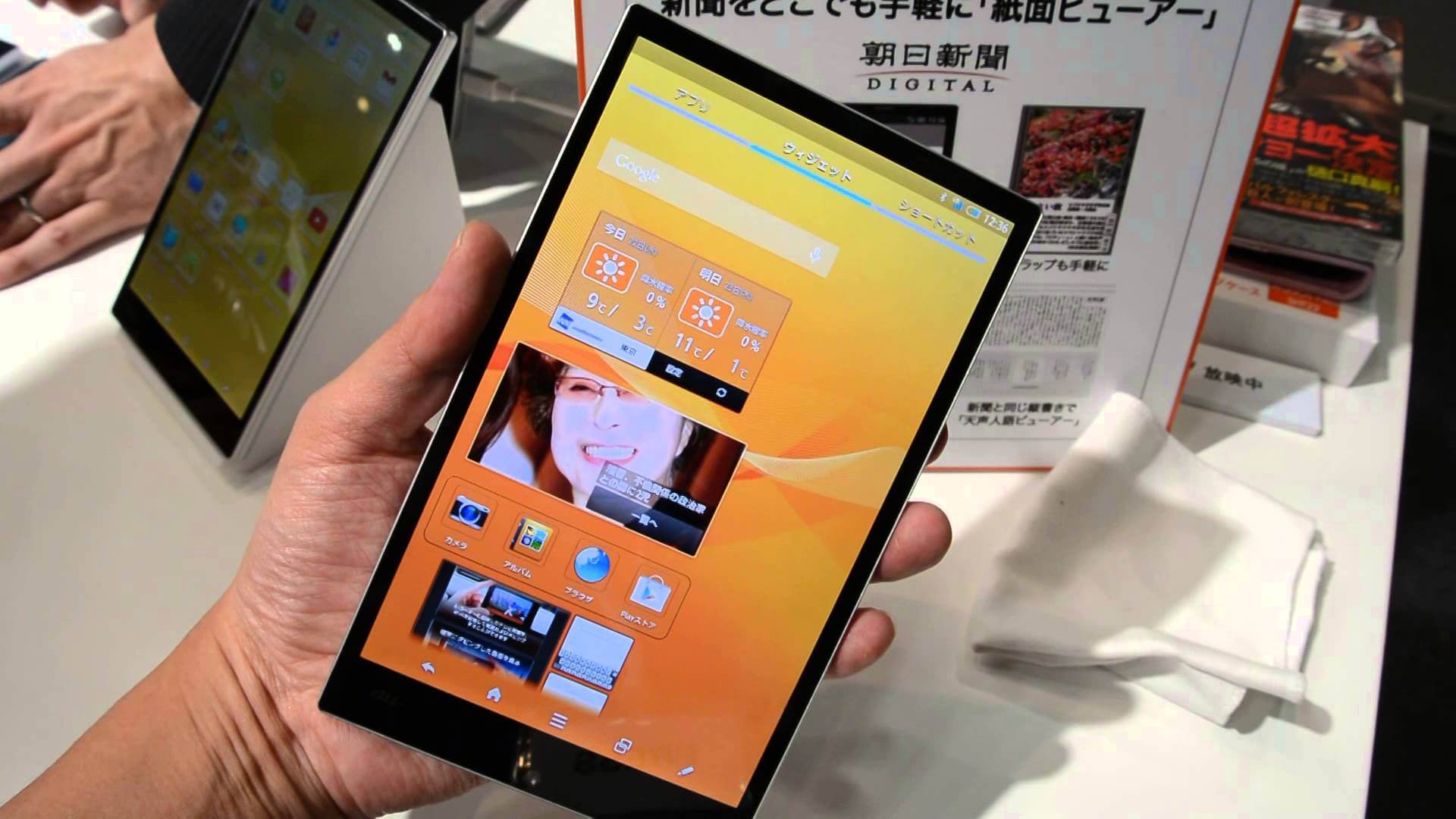
Mobile phones are on the verge of breaking yet another pixel density record as Sharp just announced its first 4K mobile display. The 5.5" panel has a 4K resolution of 3860 x 2160 pixels for the insane density of 806ppi (the Highest in the world, so far).
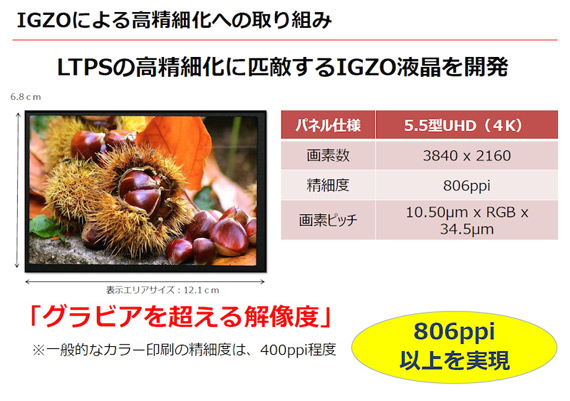
The IGZO screen utilizes a conventional RGB matrix, meaning there aren't going to be any issues with sub-pixel rendering. Not that those were very likely given the density of the panel.
Unfortunately mass production of the panel is proving to be tricky and Sharp doesn't expect to be able to achieve it before sometime in 2016. So if you are very eager to try out the new super sharp tech you will have to wait for at least another year.

Apple unveiled the latest update tot its iOS operating system, iOS 13 at WWDC event in San Jose. Most interesting change for iOS 13 is the addition of a new dedicated dark mode that switches the system UI to darker color scheme. Dark mode isn't a new thing and we have already seen it by other mobile vendors. What's different is its schedule feature which automatically changes the mode based on the time of the day. Wallpapers have been optimized to feature variants for both light and dark mode themes. Dark mode is battery friendly and also easy to on eyes.
The new photo app lets users to edit pictures without any other software. New controls include vibrance, white balancing, sharpening, clarity defination, noise reduction, and vignette filters right from the photo app. It can also do the video editing at the advance level, something which used to require special dedicated software before this. The album app has also updated massively and has sorting functionality which allows users to find images from the gallery easily. Apple made a big emahasis on new privacy and security features. The iOS13 is now ‘sign in with apple' instead of your traditional email account. There are other small improvements such as you can share images without giving out your location based on your preferences.
Apple has also revamped the mapping data for its own map app. Using new technology, new map delivers significant details. Apple also introduces its own version of Google street view but Apple's implementation seems a lot more seamless and effective than what Google has achieved. Devices with A9 chips now support generation of your own Memoji stickers. iOS 13 also support external files on USB drives, SD cards or even hard drives. The new OS now supports showcasing of full file metadata, zipping, and unzipping files.
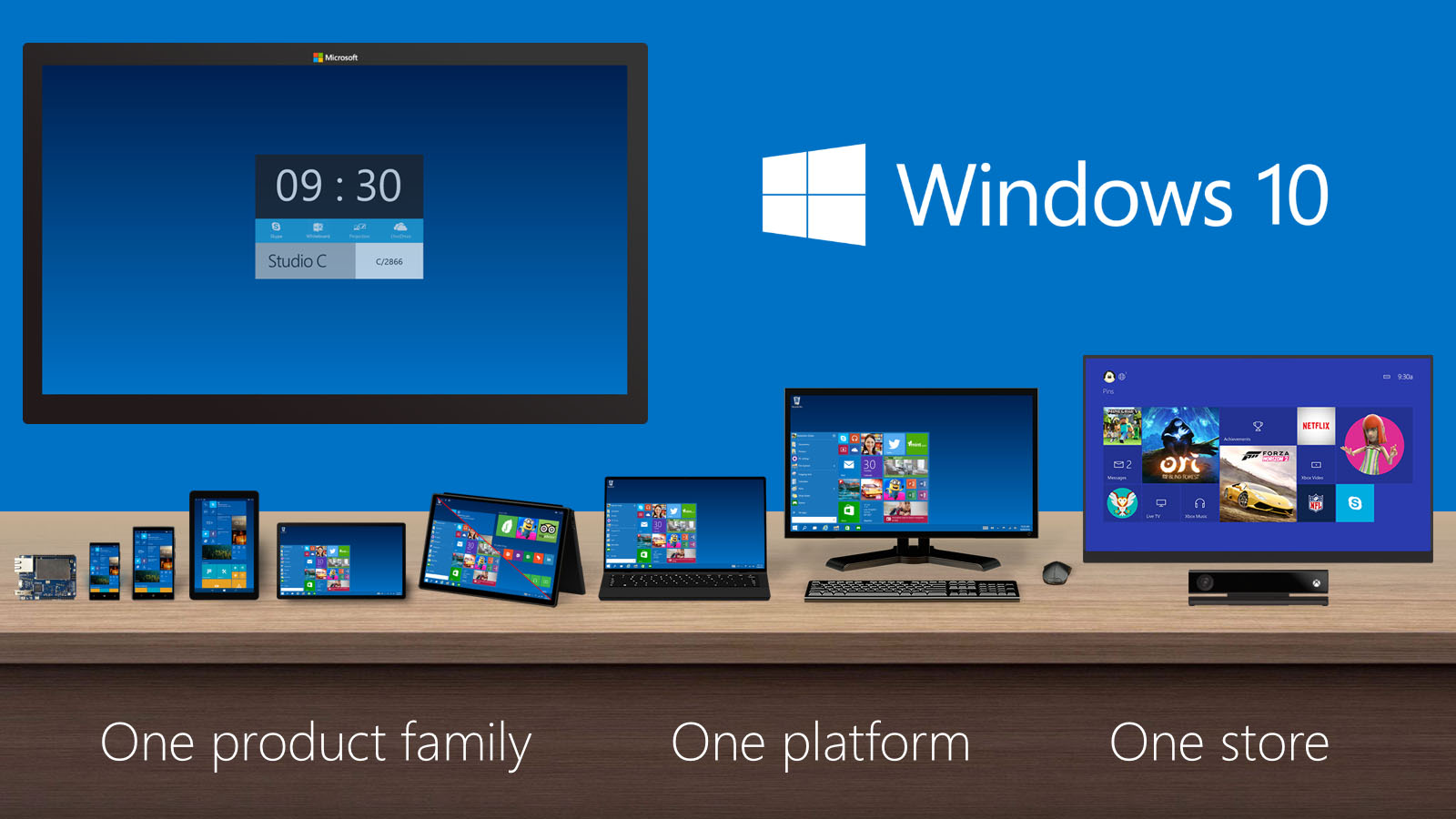
Microsoft decided to skip the number 9 entirely and name Windows 10 as the successor to Windows 8.1. The new OS version will unsurprisingly come with the features that have been rumored for the next Windows iteration over the past few months.
On the PC side, Windows 10 seems to be all about convincing those who are still sticking with Windows 7 to finally upgrade.
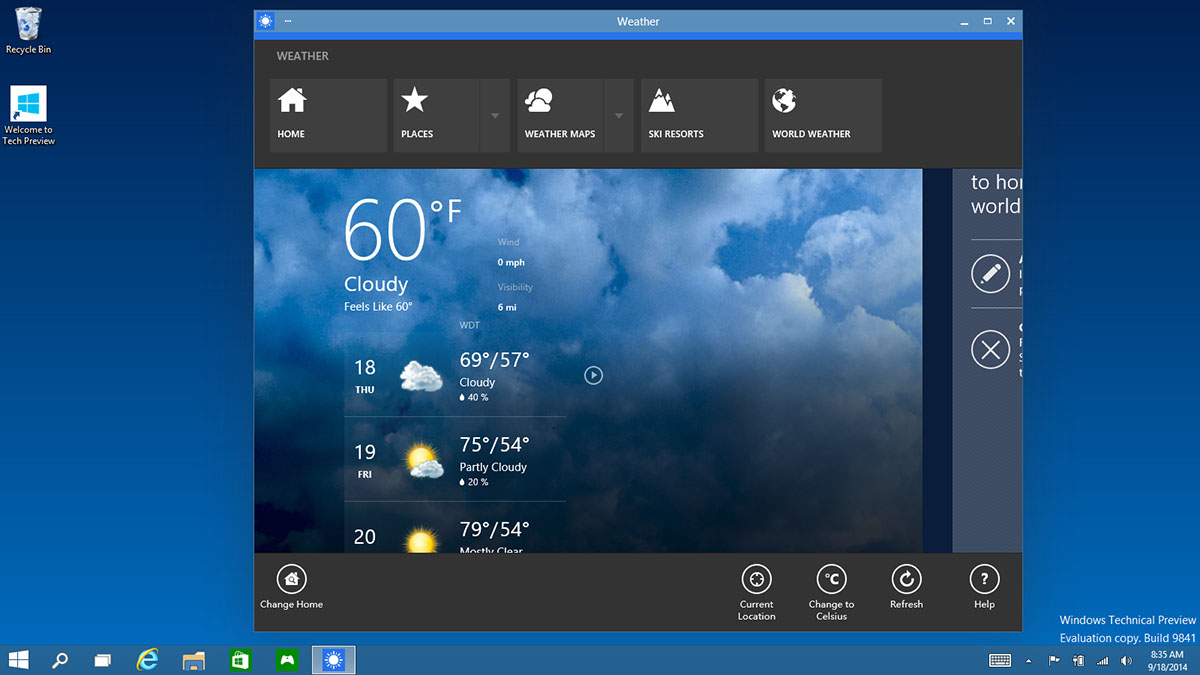
So the Start Menu is back, though with a distinct "Metro" vibe. It has tiles and icons that are a blend of classic and new universal apps. Tiles can be re-sized. The new Search feature in the Start Menu pulls results from the Web as well as local content.
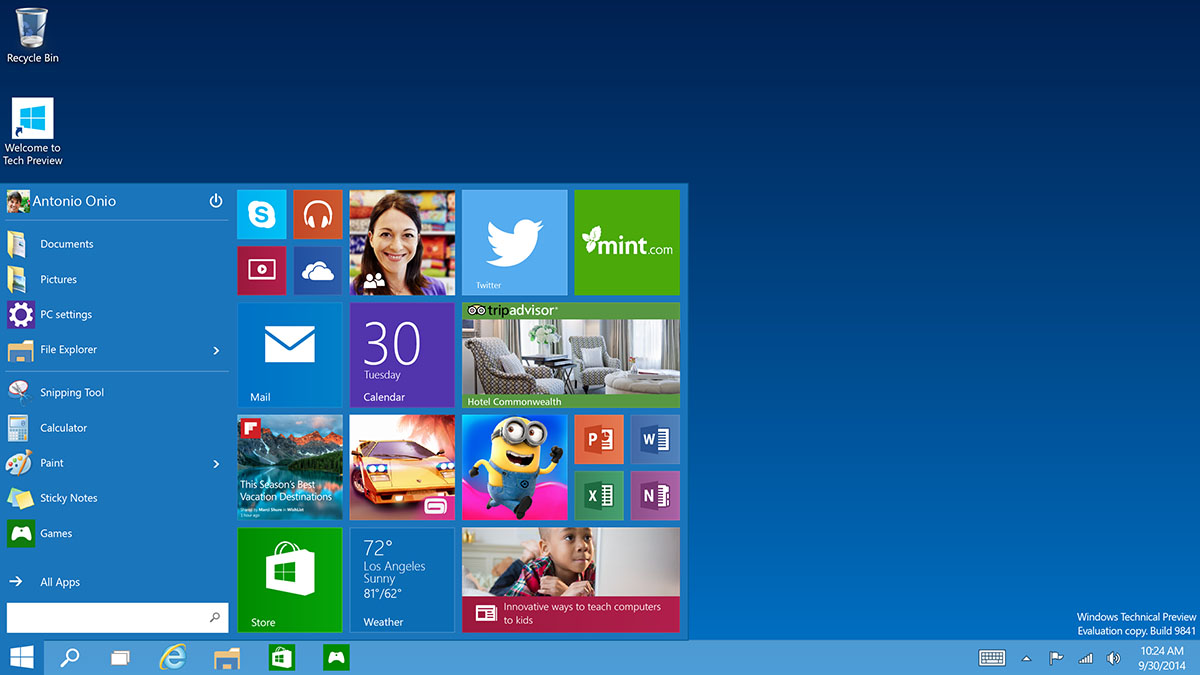
Users of Windows with mice and keyboards are finally taken seriously again, with the dual-environment feel of Windows 8 now totally gone. Modern (metro) apps can run in windowed mode. Hence, Snap View now works with both types of apps, and it's even been expanded to allow for a maximum of four apps to be on the screen at the same time.
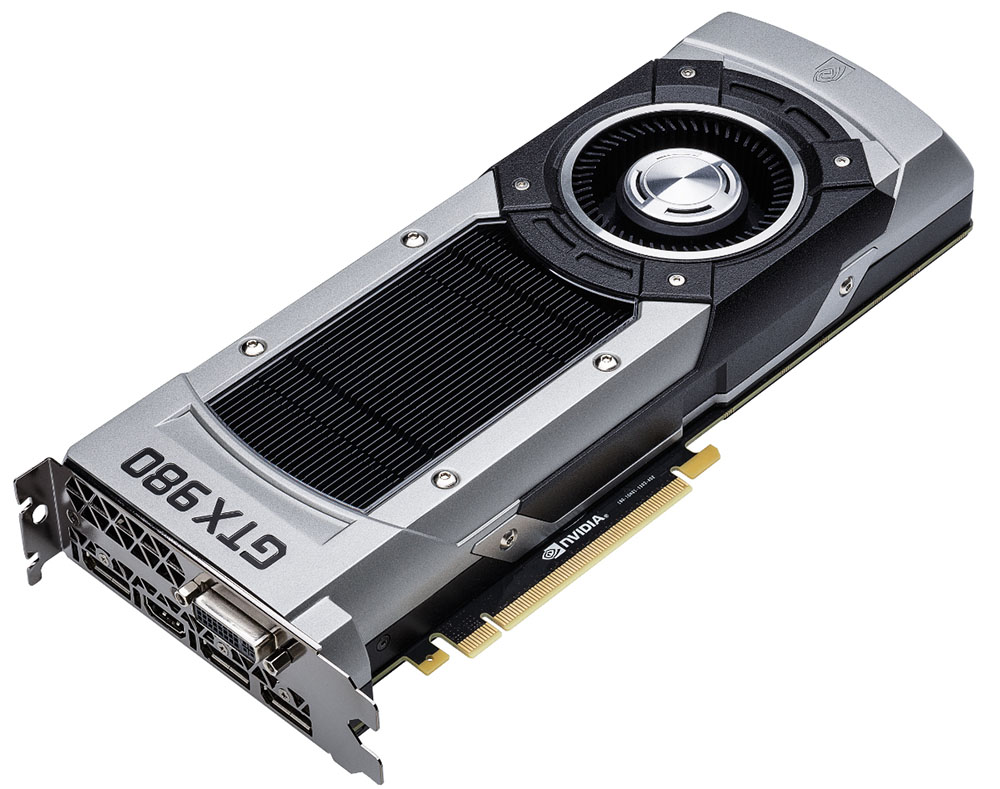
NVIDIA has announced two new graphics cards for the PC, the flagship single-GPU GTX 980 and the mid-range GTX 970. Both are based on NVIDIA's 10th generation Maxwell architecture, which succeeds Kepler.
Other than being more powerful, the two new graphics cards also introduce some new technologies from NVIDIA, including Voxel Global Illumination (VXGI), which enables real-time global illumination. This enables the light to reflect off surfaces more naturally, and the resultant illumination is more realistic and accurate.
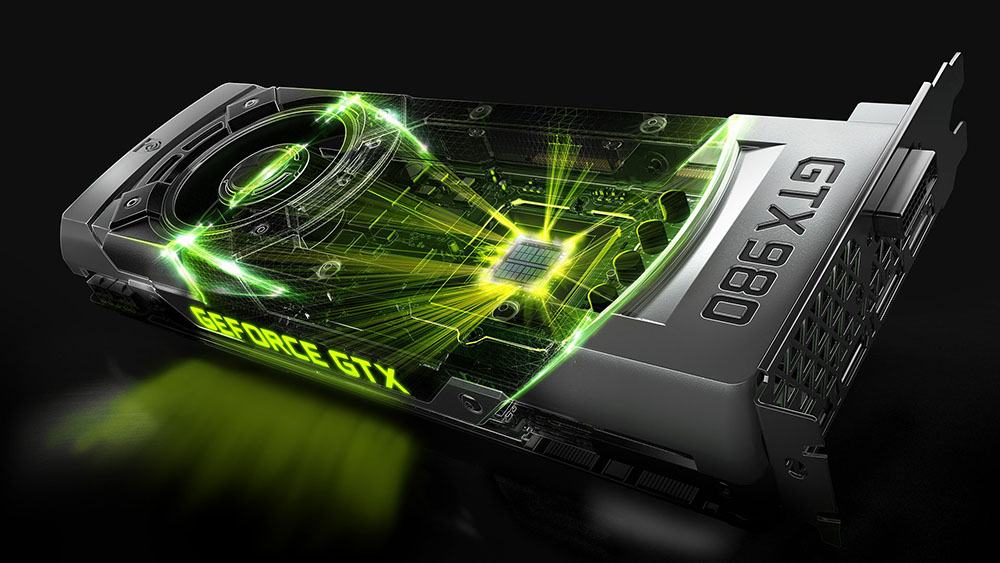
Another new feature is Dynamic Super Resolution, which is generally known as supersampling. What this feature does is it renders the game at a higher resolution than your monitor. So if you have a 1080p monitor, the graphics card will render the game at 4K or higher and then downsample it down to fit your screen. The resultant image is cleaner and has less aliasing. This is sometimes present in games and available as SSAA or FSAA options within anti-aliasing settings but in this case, NVIDIA is doing it within its own GeForce Experience software rather than letting the game do it, assuming the game has the option.
The GTX 980 and GTX 970 will be available from various hardware partners, including ASUS, Colorful, EVGA, Gainward, Galaxy, Gigabyte, Innovision 3D, MSI, Palit, PNY and Zotac. The prices start at $549 for the GTX 980 and $329 for the GTX 970.
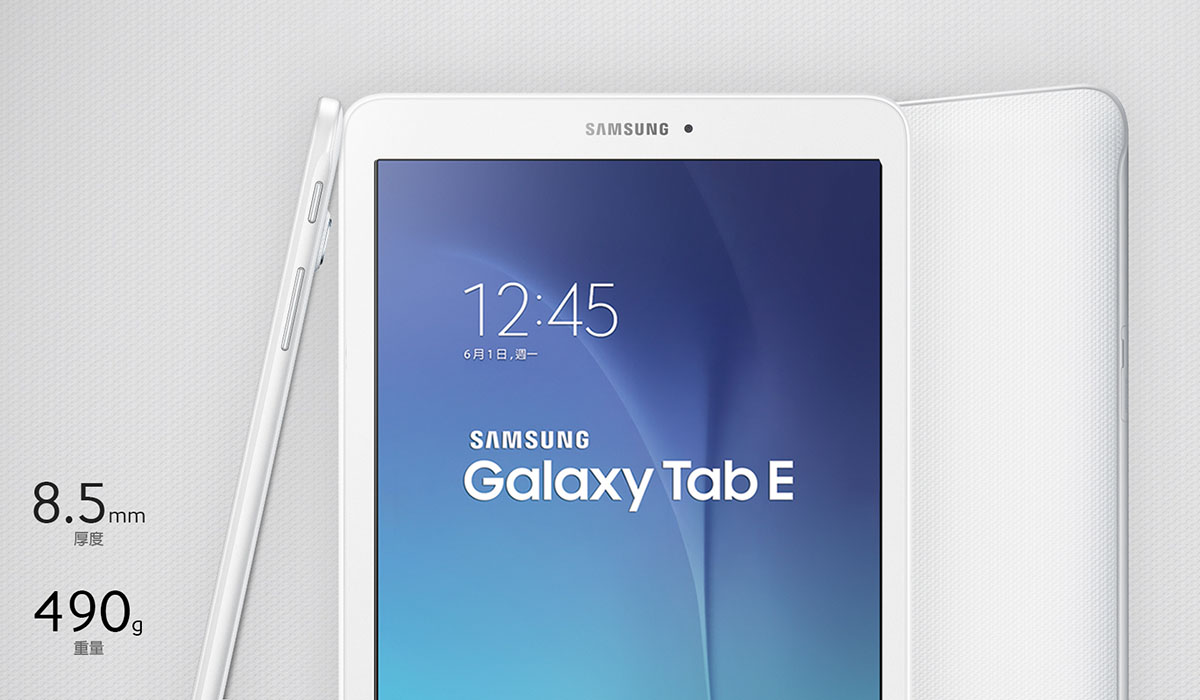
Samsung has just officially announced the Galaxy Tab E with model number (SM-T560), the tablet is low-end device with a low price and decent features. The Korean giant announced the device in Taiwan, the Galaxy Tab E is 8.5mm-thin, weighs 490 grams, and sports a 9.6-inch TFT display with 800 x 1280 pixels. The new slate is powered by a quad-core 1.3 GHz processor possibly a Spreadtrum SC7730SE, However, Samsung didn't confirm this yet.
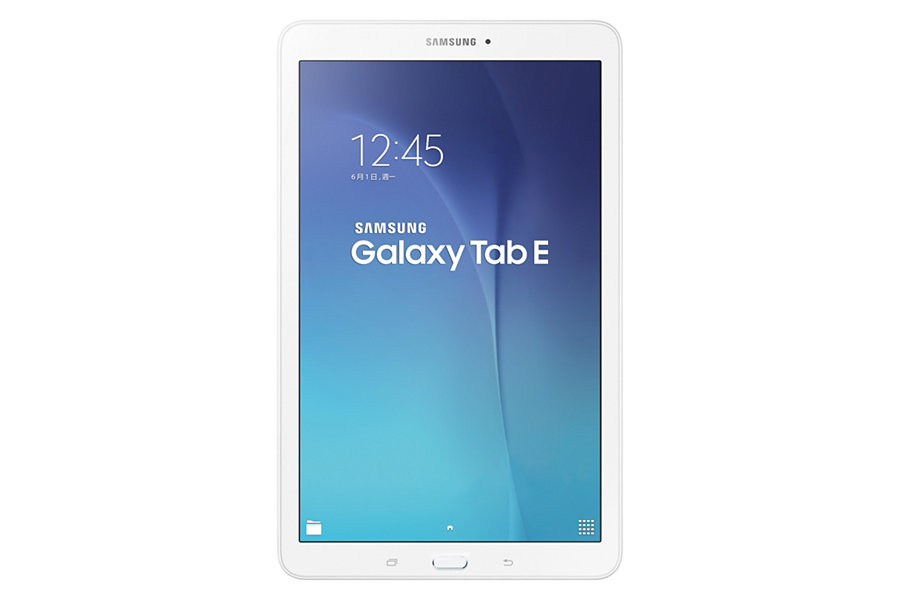
Apparently running Android KitKat (instead of Lollipop), the Tab E comes pre-installed with Microsoft Office apps. It further offers a 2 MP front-facing camera, a 5 MP rear camera, 1.5 GB of RAM, 8 GB of storage space, and microSD card support. The tablet has a 5000 mAh battery, which, given the rest of the features, should provide a decent usage time.

The Tab E SM-T560 is a Wi-Fi-only device, but Samsung should also introduce a Galaxy Tab E SM-T561 with 3G connectivity. The Wi-Fi-only model costs around $225 in Taiwan, where it should be released before the end of this month.
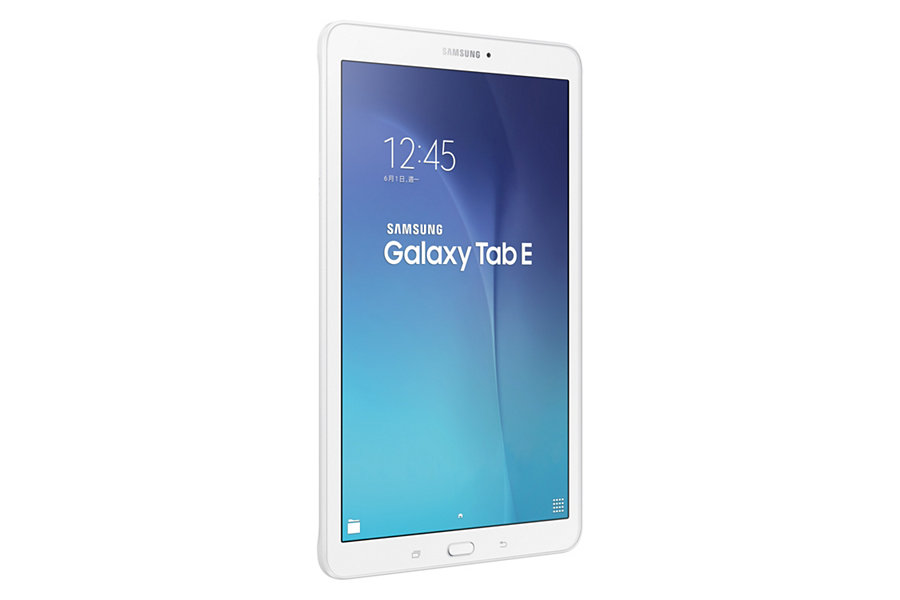
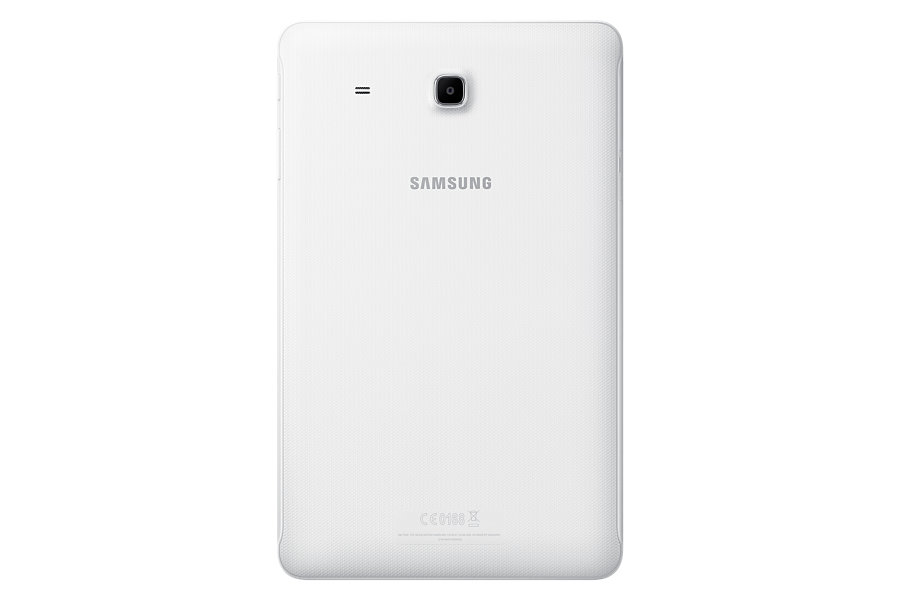
We assume that the Galaxy Tab E will be launched by Samsung in other markets, but for now there's no official info about this, for now. Stay tuned!

At today's event, Google has just launched the LG Nexus 5X and Huawei Nexus 6P with Android 6.0 Marshmallow.
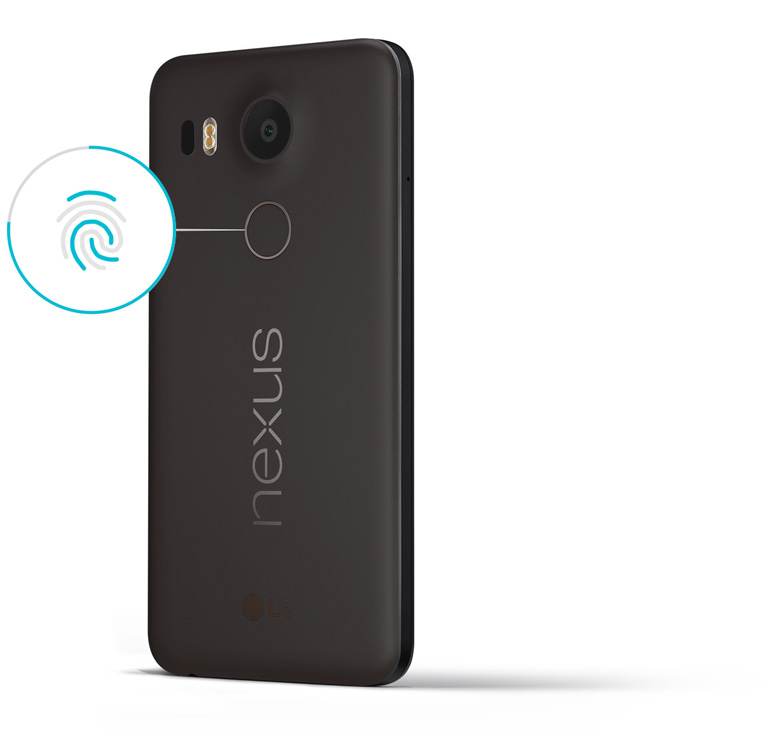
The phone is built around a 5.2" IPS LCD display of 1080p resolution, resulting in a pixel density of 424ppi. The screen is covered with a layer of Gorilla Glass 3.
Google launches the Nexus 5X with Android 6.0 Marshmallow out of the box. It runs on the Snapdragon 808 chipset with a hexa-core CPU, 2GB of RAM and an Adreno 418 GPU. Internal storage is either 16GB or 32GB with no option to expand it.

Connectivity features include Wi-Fi 802.11ac (2x2 MIMO), NFC, Bluetooth 4.2 and GPS/GLONASS. There's a single front-facing speaker, which is joined by 3 microphones (at the front, top and bottom).
The LG Nexus 5X will be available for pre-order starting September 29. Those in the US, UK, South Korea, Japan and Ireland will be able to pre-order the phone starting at $379.99 for the 32GB variant.
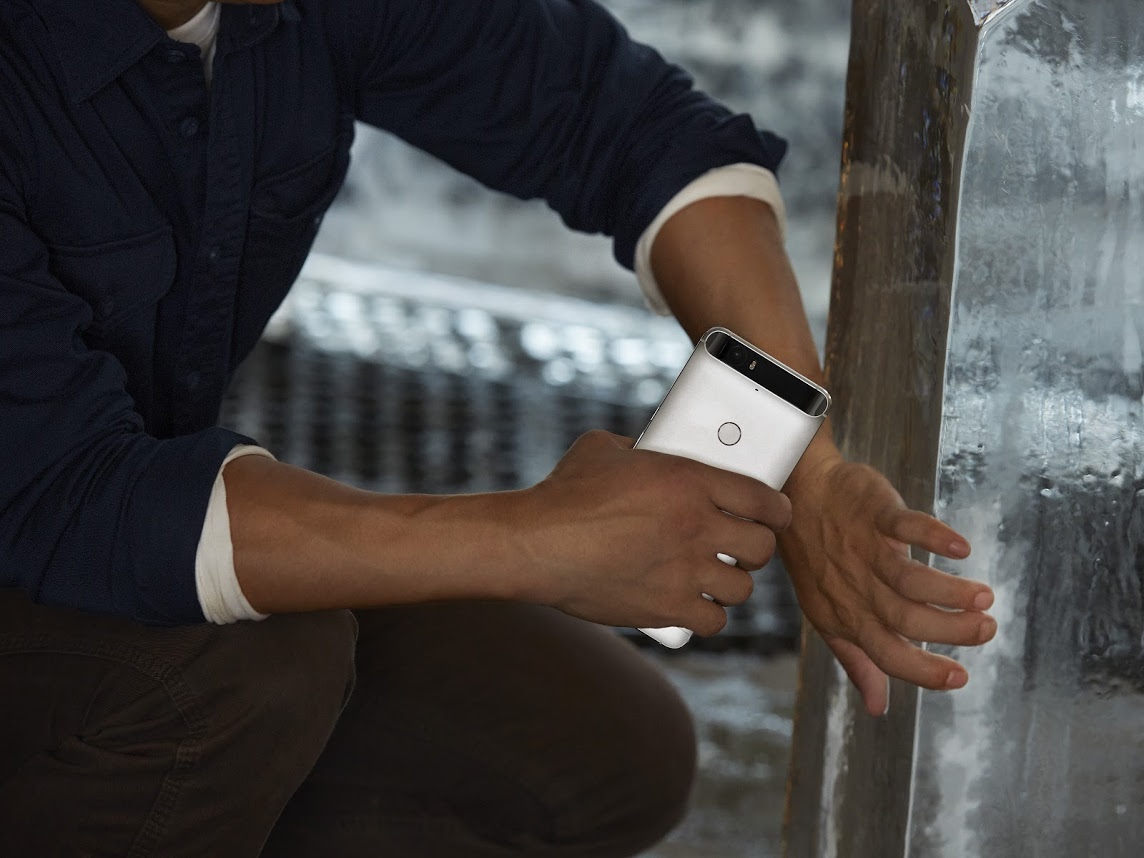
Google and Huawei positioned the Google Nexus 6P against the flagship phablets with a smaller 5.7" screen. It's still an AMOLED with QHD resolution (1,440 x 2,560px), the front-facing speakers were also carried over to the new design. The whole thing measures 159.4 x 77.8 x 7.3mm, just a tad taller than an iPhone 6 Plus despite the two front speakers.
The camera was spruced up as well with a new 12.3MP sensor, which boasts large 1.55µm pixels and a relatively wide F/2.0 aperture. This is in addition to the dual-LED flash for promising low-light performance. It records 2160p, naturally. The selfie camera is no slouch either 8MP sensor with 1.4µm pixels and F/2.4 aperture.

A highlight of both Android 6.0 Marshmallow which debuts with the Nexus 6P and the phablet itself is native fingerprint reader support. The reader is on the back instead of the Apple-preferred front position.
Another Marshmallow feature is Doze, which promises improved battery life with lower standby power use. The 6P further helps that cause with a bigger battery 3,450mAh, bigger than both the Nexus 6 and Note5 batteries.
The Nexus 6P is powered by a Snapdragon 810 chipset (the cooler-running v2.1 refresh). It should give games on the QHD screen a boost compared to the Snapdragon 805 in last year's Nexus 6. The chipset is paired with 3GB of RAM (same as last year).
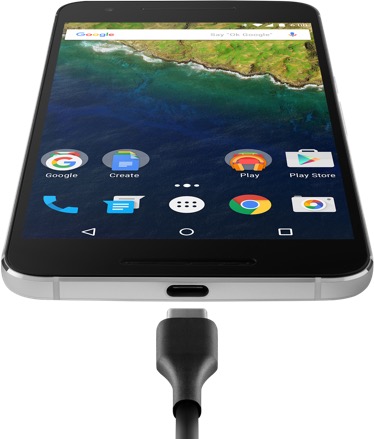
Nexus 6P official Specifications
The metal unibody comes in plain Aluminum, Graphite, Frost and Gold colors (however, the Gold one is exclusive to Japan for now).
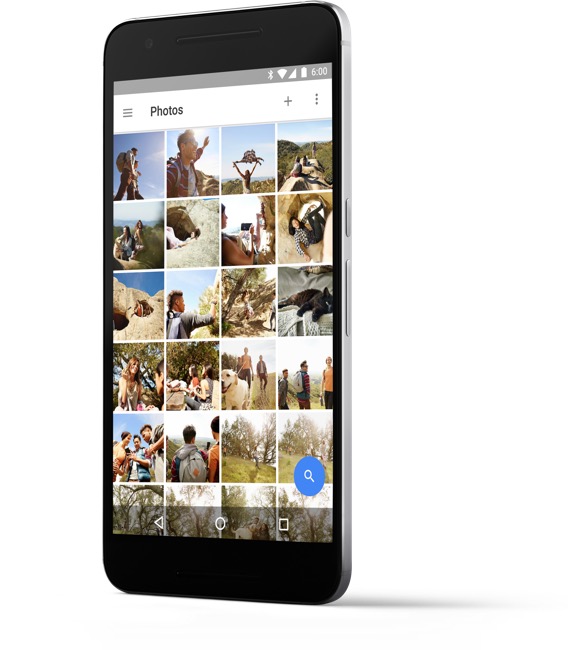
The Nexus 6P 32GB will cost $500 and will be available in multiple countries starting today (others will have to wait a bit). For the 64GB model expect to pay $550 and for the 128GB $650. In the UK and Europe those prices are £450/£500/£580 and €650/€700/€800.

It has now been made official by LG that the upcoming G6 will sport the world's first QHD+ display with an aspect ratio of 18:9. The 18:9 aspect ratio will be spread over a 5.7-inch LCD panel with a resolution of 1440 x 2880 pixels. The 1440 x 2880 pixels resolution will give the G6's display a ppi of 564. According to the Korean electronics giant, the wider ratio will allow for better immersion while consuming media or playing games. Additionally, it has been mentioned that the G6 will also support better multi-tasking with dual screen functionalities.
The display on the G6 won't feature a touch cover glass, something that has so far been necessary in order for a smartphone to be touch-responsive. Instead, LG's in-TOUCH technology will make use of touch sensors embedded into the very LCD panel itself. What would be the point of that you may ask? LG says that it will result in a more sensitive touch response and improved sunlight visibility. Not to mention the fact that the lack of the touch cover glass on top will allow for the G6's display to be as slim as just a single millimetre!
Saikat Kar (tech-enthusiast)
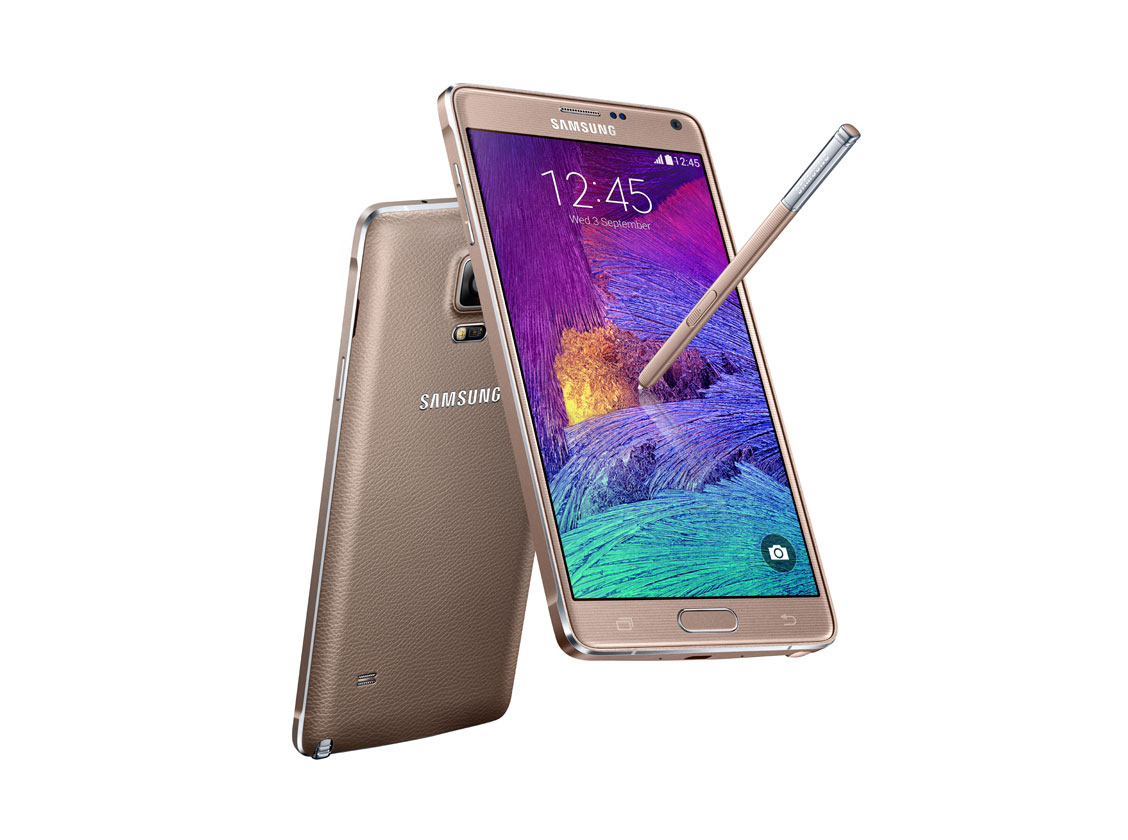
Samsung has just officially announced a New variant of the Galaxy Note 4 in South Korea. This new model is called Galaxy Note 4 S-LTE with model number SM-916, it will hit the shelves in its homeland in mid-January.
Samsung Galaxy Note 4 S-LTE packs a 64-bit Qualcomm Snapdragon 810 chipset. The rest of the device's specs is the same as the Original Note 4. The new model (LTE Cat.9) will be capable of offering download speeds of up to 300Mbps via carrier aggregation. In theory, the speeds can reach up to 450Mbps.
Samsung Galaxy Note 4 S-LTE will be available on all major carriers in South Korea. There is no word on availability outside the country for the time being.
© 2023 YouMobile Inc. All rights reserved






